|
During the pandemic, we were not able to do in person workshops, so material we had collected stayed in basements and sheds. We do keep a little for makers projects and swap starters but really, the best place for textiles in in use, on backs or beds or making new things for ourselves or friends. We are committed to NOT throwing anything out so small scraps we use for stuffing art-making etc. but we are activly looking for opportunities to reduce our stash of textiles. Textile waste can easily become overwhelming so we always make sure it is going where it wanted/need/will be used ASAP. Here's a few places the swap remains went: - Double Take (gently used SEASONAL clothes PLUS material for their upcycling studio) -Material Return (they collected socks from individual donors to recycle on an industrial scale, during earth month, as part of the second Cut project) - costumes went to a local high school drama department -Jessie's place (runs programs for mothers and infants... takes donations by appointment only) -artists in the collective to make crafts, cloths and use in workshops -teachers for use in sewing/fashion after school clubs - yarn and tools to redistribute through Marnie's little free art library 2023, we did less with more... or something like that. We are in our fifth year as a collective and we have had a more passive year than in the past. Our founding members have had other pulls on our time, injuries and just other priorities, but we have still been able to host a good swap, pass on some knowledge, play with others and say yes to some fun opportunities. We were able to be sustainable, not over tax ourselves or members of the collective, but still grow as a collective, making connections to new community (institutional) partners as well as connect with, support and learn from new artists so what more can you ask for? Here are some photo highlights season to season from the year that was. images (from left to right, top to bottom, more or less): gifts for the neighbourhood via LITTLE FREE LIBRARY, Spring CLOTHIG SWAP images: poster and site, set up volunteers selfies, Leah and Leona sorting clothes. second row: (still at swap) Leslie modelling a purse, Shams teaching repair during power outage, Nancy drafting a pattern. third row: long line of swap volunteers mid clean up R fourth row: Some individual work of our members: WiP member and textile activist Shams el Din rogers as a guest on Check your Thread podcast. She's also been on Stitch Please and probably more. A couple of winter repairs from Tanya, Leah working on The Gathering, a show she co-curated at the Textile Museum of Canada. Our new shed outside the church and the key. January to March: clothing swap and winter solo projects We partnered with Glebe Road United Church at their request, to co-host a clothing swap while their tenant school was on a 2 week break. We had done something similar in 2019 and had worked with the church since the Reverend Cynthia had returned in our last neighbour-to-neighbour swap. This was our first return to indoor one site swapping and it was fantastic. Great turnout despite the rain (and a power outage) we had visiting artists doing demos, members leading repair and upcycling workshops, a makers swap on the side... it was super fun. Otherwise the winter was mostly individuals working on their own projects to try to make the world a little more sustainable. images (from left to right, top to bottom, more or less): spring blossoms, poster for eco market, Tanya and Alex at the Edgar Allen gardens Eco Market for Earth Day, Alex wares for sale, poster for Ringing in Spring Community Fair in Davisville's June Rowlands Park Second row: lavender sachets and Book sale from Earth Week events at Davisville PS (sign materials and swap supported by WIP), WIP workshop poster and book at Ringing in Spring Event May 6 third row: Leah pounding flowers, poster for HRP, flowers, bunting picture over picture of Leah , Tanya and Marnie (plus Astrid) community drop in flower pounding table at Ringing in Spring fourth row: Iki from Humber River Pals holding up finished bunting, a couple photos of making bunting at Humber River, a coiling project (learned from Lora) some pride earrings made by Ursa and Safiya, Alex at Hogstown Market (poster and pride patches) plus Gabrie sewing bunting. April to June: we say YES a lot We are invited to take part in an Earth Day Eco market at the Botanical Gardens in Toronto, to support a swap at a school, to host an activity and run a booth at a community fair in Davisville, run a drop in workshop for busy volunteers in Humber River and help some guides sew T-shirt bags for a badge (not shown) Some of our members are exploring more making opportunities, like Alex who is busy vending at craft and thrift pop ups across the GTHA. 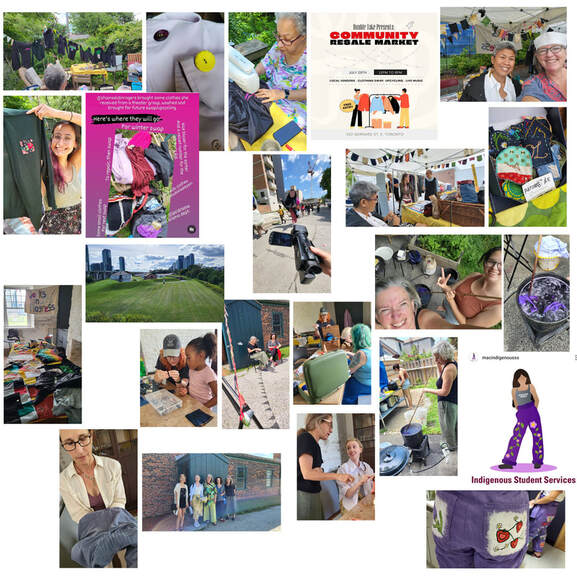 mages (from left to right, top to bottom, more or less): first and second row left side 5 images from a Work party! a small gathering with a mission- logo removal on a pile of donated clothes from a private school. altertered clothes on a clothesline, button repair, shams at her machine, Marlene holding up a patched cardigan, instagram post about where it all goes. First and second row, right side: Tanya recording a puppet parade with Musical story Studio (side art, still environmental) then 3 images and a poster from the DT Resale market. Tanya and Leah at the WIP booth, Leah with Sharon and customer, patches for sale third row: Fort York workshops: sign with goods, Fort York wide shot, Alex and young maker below, Lora and Sandra mending outside FY schoolroom, Alex sewing with Amy and Delphine. then 4th row Jennifer with visible repair, group outside the schoolroom, Lora and Gabrie Third, fourth and fifth row (right side group): Tanya and Ursa dying overalls for welcome week volunteers, overalls in vat, Marnie and Ursa dying overalls, instagram post from @Macindigenousss, some of the finished overalls with embellishments. July and August Like last year, we decided not to initiate anything during the summer, but just see what came along... and a lot came along. We met in Tanya's backyard for a work party mid week in June and did some logo removal with new sewists (WIP member Shams saying YES to donated textiles to keep them out of landfill.) We said YES to running a table at a Double take experiment (their FIRST Community Resale Market) and we said YES to hosting workshops at Fort York city museum(now free to the public) At the end of the summer we gathered in Marnie's backyard to do an epic dying session. Tanya's daughter Ursa was co-planning Welcome Week at her university and tapped Marnie to share her textile knowledge and WIP to help dye a dozen cotton/poly blend overalls... no easy feat, but they looked gorgeous. images (from left to right, top to bottom, more or less): Donated vintage sewing machine, Repair Fair poster repair table with Tanya, Leah and BR ringer, Tanya and Susan at Climate Commons (we donated bunting but not shown here), a jack-o-lantern
Second row: Leslie modelling her scrappy overalls, Cassie and Tanya with stuffing from Cassie's couch ( a donation to WIP) Leah sewing at the BR repair table, poster for Eco march, Little Free Art Library in Marnie's front yard. third row: (after Leslie) poster for Country Clothesline (workshop lead by Nancy), donated twine passed onto artist Lora for a workshop, Coiled bowl in progress, free shelves and donated shed space, found chair recovery project fourth row: Tanya filling in as facilitator at BR "Do-it-together" workshop at Moss PArk Market, participants holding up sachet, poster for coiling workshop, "Winter of care and rEpair" post, Shams posting a dailing repair fifth row: Moss Parlk Market with new space. participants making sachets, co-leader holding up sachet, Shams post about darning, Homemade tree decorations from scrap textiles September to December: facilitating donations, making connections and stepping up We had hoped to do another Back-to-School Swap but we lacked community support and dealt with another round of Covid. But again, we said YES a lot, we gave support to artist projects (for example, loaned bunting to climate commons, shared information about workshops and shows online), and tried to find homes for unwanted textiles and tools via donating, collecting and redistributing, sharing online and in person. For example, a neighbourhood friend donated a curbed vintage sewing machine (it still needs a home) another dismantled her couch and donated the stuffing (which is becoming futons, yoga mats, stuffies in the hands of various makers.) and another artist made good use of some donated twine for a coiling workshop. We had a couple of opportunities to play with our friends at Building Roots - Leah and Tanya hemmed a lot of pants at a Repair Table (run during Market hours, Saturday 11-3) and also covered a workshop for Kate Hamilton, part of her Do it Together series for beginner makers. Love that Moss Park community. Individual artists in (or friends of) the collective did some vending, ran workshops, made things from scraps and found objects, and shared repair stories (Shams was inspired by the online challenge issued by US Textile activist Jeanne Wigger: #winterofcareandrepair2023 challenge online (still ongoing until the vernal equinox in March 2024) We generally don't host WiP events in the summer- everyone has spotty schedules, the beach beckons, etc. so rather than public facing events we mostly get together for collective work parties or say yes to other invites. This summer we had one work party and a number of cool invites to other community events. In July we had a backyard work party midweek, after cancelling more public facing events because of rain. Tanya hosted, and Shams came with a logo removal challenge. Shams is a very public textile activist and educator and a magnet for people and institutions with textile waste problems 9check out her instagram HERE). She had agreed to take some branded uniforms from a school rebranding their logo, rendering clothing with the old logo unusable for the school. She promised to make sure she would remove the logo from all the items before passing them on.. So the bulk of the afternoon was spent removing and altering logos with the few friends who came by. We used reverse applique, over embroidering by hand and machine, sewing on patches and converting tshirts into bags with a deep cut and reinforcing the polyester material to make them last. Great creative challenge and really good conversations amongst the birds and bees on a sunny afternoon. We were joined by some neighbourhood friends and a new friend we'd met at the last Clothing swap. 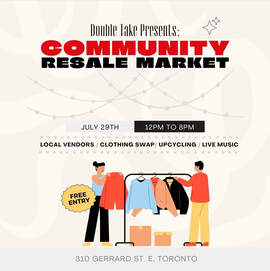 LATER in JULY we were invited to be a vendor at the first annual (?) Community Resale Market hosted by community partner Double Take Thrift store at 310 Gerrard street East. Leah and I were free so we took a half day slot and survived a rainy start, sold some work from artists in the collective, met lots of cool visitors and other vendors. The store has a newly revamped upcycling studio as well, where they host mending Mondays and upcycling workshops and sell damaged goods and donated materials and tools to wannabe makers. TWICE this summer we hosted drop in repair workshops and conversations around upcycling and repair in an old schoolroom at Fort York in Toronto. This was a cool invite we couldn't turn down, from a former programmer at the Textile Museum. On July 31 Lora, Sandra, Gabrie and Tanya ran the first workshop... with Marlene dropping by to help wrap up. We had people bring in clothes for repair advice from Gabrie (you can see some of her design work HERE), Sandra (visual artist, actor animator, more HERE) and Lora did some outdoor mending to entice visitors and Lora lead us all in a coiling workshop (you can see more of her work HERE) While we're connecting, you can see Tanya's work HERE. On August 14th Tanya returned with a new crew of artists and makers: Amy, Delphine, Alex and Jennifer to share skills. Alex Verkade was our ringer this time, she took a weekend off from vending her up-cycled wares to share her quilting and patching skills. Check out her work HERE. We shared the Fort with Jully Black and friends leading aerobics in the field, pretty cool company. 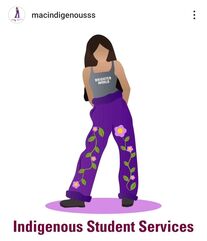 At the end of AUGUST we worked with Mac Indigenous student services to prep overalls for volunteer student hosts for MacMaster Welcome week. Ursa and Tanya worked with Marnie Saskin over 2 days to dye these poly/cotton blend suits. These were no natural dyes, we used hot hot water in two pots, on rotation a half hour at a time, with extra powerful fabric dye. Like a coven of witches, with naps in between, they looked fabulous, and even better once they were individualized with patches and paint by the students. Spring time and eco-minded community groups want to come out to play. We had a good run of public facing events in the Spring, where we were invited to take part. Here's a round up: On April 29th we supported a community swap hosted by the eco clubs at Davisville PS, lending them signs + materials + swap remains. We are trying to encourage more people to take lead on swaps so we can have more swaps. 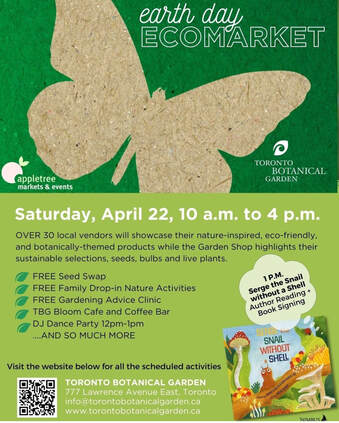 Earth Day (April 22) We have partnered with local food focused community group Appletree Markets many times over the years, and this Spring we participated in two events they hosted. Alex Verkade and Tanya Murdoch humanned a booth at the Eco Market at the Toronto Botanical Gardens for Earth Day (Saturday April 22, 10-4.) Alex is very productive with her own studio (now TerryZeeStudio) and she has been making upcycled patches, pouches and hearts from vintage quilts and other materials, so half the table was Alex goods, the other was information about Works-in-Progress and a few items made from other artists in the collective. We talked upcycling and visited plenty of awesome folks, including a butterfly fan in costume. 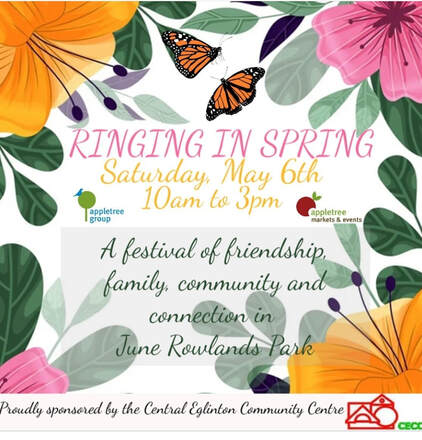 On Saturday May 6 (10-3) Works-in-Progress had a booth and ran a craft hour at the second annual Ringing in the Spring event in June Rowlands Park, also organized by Appletree Markets- they now have weekly markets at both sites. This was a lot of fun- met a lot of local artists at our booth, and spent an hour pounding flowers with community members. We encouraged the makers to hang their creations on a line prepped with more bunting pieces, and then we sewed the bunting up over the afternoon and donated it to the garden folks to use when they have programming. 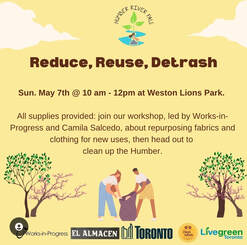 and on May 7 (10-12) we had TWO events. In the morning we played with new community partners the Humber River Pals to support the volunteers at their monthly clean up event. We were invited to activate their monthly gathering where volunteers clean up a section of the Humber River. Since we were already pounding, we kept going and made some more bunting which we donated to the group for future gatherings. Lerah won a T-shirt! And in the evening we made T-shirt bags and gave away the last of the flowers to a group of Rangers ... and got a BADGE! Here are a few of the photos from the Midtown Toronto clothing swap March 25. A truly joyful day- many volunteers helped it run smoothly and allowed us to have a maker space and repair advice area as well as a fantastic, well attended clothing swap, despite the torrential rain. We met many people who believe in a circular caring sustainable community. Plenty of people shopped the free swap (we did have a donation jar by the entrance if people wanted to contribute - we collected about $100 and used the donations to buy volunteers lunch) and *new* the maker space, with fabric, yarn and other supplies for makers to access. When we started these swaps, this was part of the goal, to connect makers to share supplies. WiP artists worked with a number of people, sharing repair and sewing knowledge, we planned future workshops/work parties, kids played with sewing machines and made bags and their own toys, and hosted a new art friend @lorabertolo and her coiled baskets. People came in completely soaked, stayed for hours, and kept working and shopping and visiting through a power outage. Volunteers worked together and kept the space tidy. Clothing donations came in and were part of the swap immediately. And we had a helpful hardworking crew from set up to teardown. Our co-host Glebe Road United Church and the Reverend Cynthia supplied access to space and tables, advertised, and gave us storage. We have been storing our best of swap starter/surplus textiles in a friend's shed, but she (Amy) is leaving the neighbourhood. The church has given us access to an unused shed on their property from now on, a fabulous solution. 2022, it wasn't so bad, and parts were really good. We are in our fourth year as a collective and our theme this year was seeking ways to work and grow sustainably. A big lesson from the pandemic (ongoing) is both to not do unnecessary work, but also to do more of what we do love and what works. We are working in a seasonal rhythm, we have been test driving alternate methods of playing with others (big love all 'round for our "work parties") and with each other (shared support and encouraging rest) We were able to grow as a collective, making connections to new community (institutional) partners as well as connect with, support and learn from new artists so what more can you ask for? Here are some photo highlights season to season from the year that was. 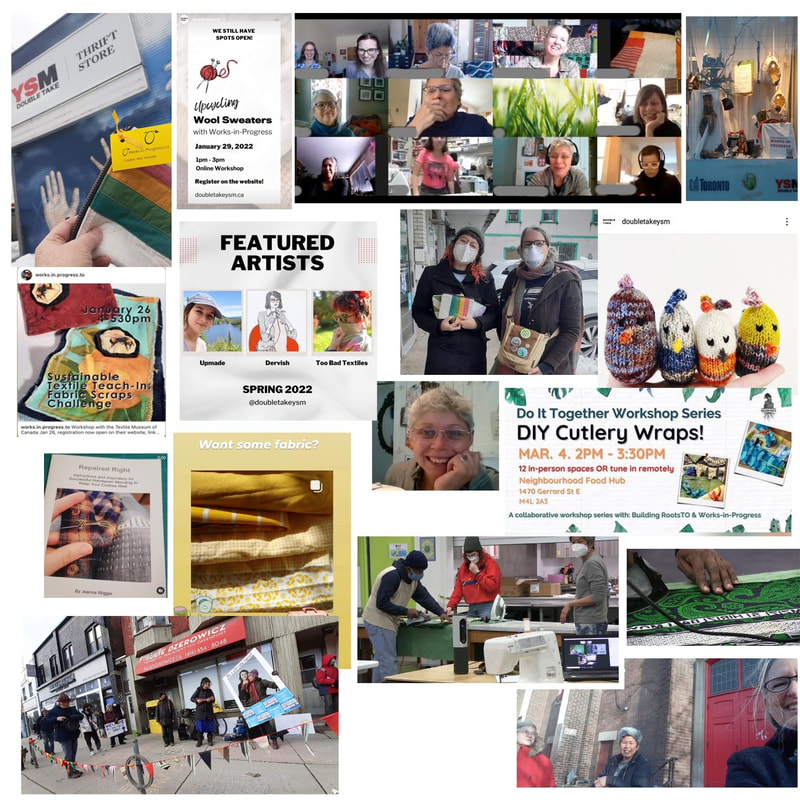 Images (from left to right, top to bottom, more or less): Dropping off goods at Double Take thrift store (310 Gerrard St. E., Toronto) during our residency, DoubleTake upcycling sweaters workshop, a still from the online workshop and WIP items on display in the window of Double Take. Second row: Workshop ad for Scraps Challenge at the Textile Museum; DT Spring residency announcement, Textile artist Alex Verkade delivering work to the residency via Tanya; Nancy Rawlinson's "Chickens of encouragement" for sale on the DT website, third row: Repaired Right pamphlet from artist Jeanna Wigger, online fabric giveaway from Marnie Saskin, Marnie hosting online part of hybrid "Cutlery Wrap" workshop and the Do-it-Together invite for our Cutlery Wrap hybrid workshop, fourth row: Banners at a climate action, then images from the in person part of the DiT workshop: participant with Alex and Leah, hands ironing, Kate Hamilton with Leah and Tanya outside the venue. January to March: workshop and residencies while isolated The year began with another wave of Covid causing lockdowns and shutdowns into January. We began our Double Take Thrift store artist residency at the end of 2021 and were very happy to be joined by more artists as the residency continued into March. Textile artist (Alex Verkade) joined us in the residency with her upcycled quilt pouches, and then applied to be artist in residence as a solo artist in in the Spring. We lead two successful workshops in January - an upcycling one (deconstructing a sweater) as part of our DT residency and the other a really fun "scraps challenge" online teach-in with the Textile Museum of Canada. We also sought more ways to connect with makers and community partners: we connected with U.S. based textile artist and repair activist Jeanna Wigger to bring her wonderful "Repaired Right" booklet across the border. WiP artist Marnie Saskin used a fabric giveaway online as a way to demonstrate our philosophy of "there is enough" and kept their front yard "little art library" stocked with donations from neighbours in Hamilton. We loaned our bunting stash to support climate activists in Toronto, and WiP artist Tanya Murdoch used her video skills to document and share the event. And we continued to roll with circumstances in the world, and as venues opened up to in person workshops we wanted to keep the benefits of online learning so when Kate Hamilton from Building Roots asked us to join her Do it Together series we did it with facilitators in person and online, with connections at the beginning and the end of the workshop. It was lightly attended but really rewarding and a model for workshops going forward. Images (from left to right, top to bottom, more or less): Appletree's Ringing in the Spring post and images from the event in June Rowlands park and the neighbourhood swap, including Nancy at the Repair+reuse advice table, Mehtap Mertdogan with Tanya our Spring swap poster designed by Lara Boadway; second row: Marnie at hand cranked sewing machine, Heather and Margaret at their swap station, mosaics created at the event with Mehtap, Leah with flowers from Periwinke and Shams modelling her #mesew overalls plus (third row) wide look at event with bunting and kids doing activity in front of the garden sign we made in 2019. fourth row: Leah drawings and Safiya/Tanya video in the Textile museum; images from our work party including Marnie Alex and Leah going through shams' fabric stash; Tanya holding up finished bunting and (below) Shams and Alex sewing at work party, bunting in process and then (ends of row 4 and 5) bunting loaned to local fun fun fair, collaboration of Safiya's wool knit into mittens by Nancy (and regifted to Safiya) plus Alex textile art in Niagara gallery (inclduing some fabric from work party) and Music for Climate Justice musician Cassie Norton playing violin. April-June: in person play We were really excited to time our Spring Swap to coincide with a new event started by our community partner Appletree Markets they called Ringing in the Spring, with eco/educational booths, crafts, music and food. We collaborated with local mosaic artist Mehtap Mertdogan to create mosaics with families in the park, we had a repair advice table with Marnie Saskin, Nancy Rawlinson and a textile activist and artist new to us, Shams el-Din Rogers- we brought upcycling samples and handcrank machines. We also had our neighbour-to-neighbour swap with ALL sizes at various yards around the park, and a team of teen volunteers to help support the hosts. It was exhausting but really satisfying. And being together in person built stronger bonds: Nancy and Safiya got to know each other, and Nancy took some of Safiya's hand spun yarn and knit her a beautiful set of mittens. Leah and Tanya took Shams' aunts purses, and the drama department got a new fur coat. The event was all hands on deck, and with Tanya still exhausted post Covid, we decided to cancel the Hamilton version of the swap and just store/donate remains until the fall. we also filed the final report for our OAC grant, which had supported many educational/artistic events as a collective over the past year and a half. We felt more comfortable meeting in person as the weather warmed up, and sought new ways of skill sharing- the "work party" was born, and the first was hosted by our new friend Shams. We did prep for swaps, especially bunting, using Shams' die cut tools. Our other new friend Alex was able to come help sew and also collect some fabric for an installation she was doing in Niagara, and between that, the bunting, Leah, the Textile Museum, Marnie, Tanya and Shams' school we found new homes for all of the fabric Shams didn't need. We also loaned out the bunting again, to another community partner, for a fun fair at our local elementary school in Midtown Toronto, the first in two years, and built connections with the climate activist musicians we met in March by lending video support to a grant application: we hope to work together in the future. Images (from left to right, top to bottom, more or less): The summer of bunting! Bunting onstage at Sunfest 2022; Marnie and Amy Brown hanging bunting, and Sandra Pascuzzi wearing one of Marnie's pod forms during her art deconstruction party at Christie Lake. Tanya and Marnie with bunting created at our second work party plus (second row x2) Anya Laskin and Susan Bakshi cutting and sewing bunting at our third work party and (below) Shams and Leah joined by textile artist Soledad Muñoz ; travelling bunting poster at the Textile Museum fabric sale, teen helpers Ursa and Taylor making bunting at the museum and cushion covers (made by Tanya from fabric from the Textile Museum and Creative Reuse sales) WiP artist and textile activist Shams el-Din guest on podcast above Leah's shoe repair. Row3/4: receiving donations from Viking Recycles, Tanya and Marnie setting up at AGB, over photo of bunting stash; WiP artists Marnie, Leah, Shams and Tanya at opening of "Parallel Economies" at the AGB; happy swappers/upcycling family at the opening, image of bunting in show from opening. June-August: free range summer and the amazing travelling bunting This summer was all about the bunting. We were approached by curator Suzanne Carte from the Art Gallery of Burlington to take part in a group show called Parallel Economies (one of three in a wide ranging series called the Future of Work) and in preparation we hosted two more work parties making bunting, T-shirt bags and new friends, luring in some neighbourhood friends to donate unwanted fabric and try sewing machines for the first time. We also met an amazing textile artist named Soledad Muñoz through Leah's work at the Textile museum who came to share her work and take home some fabric for her project making arpilleras. We also took things apart: Marnie has a dream of being an art death doula and she hosted an art deconstruction afternoon at Christie Lake Conservation area with artists and friends and family, taking apart paintings, upcycling drawings and wearing/repurposing old projects, as well as eating barbeque and using Leah's paddleboard on the lake. Members of the collective worked on their own repurposing projects: making cushion covers from fabric scraps, turning boots into garden slippers, repairing sandals and (on a higher profile) Shams spread the word on sewing podcasts about her approach/motivation to reuse textiles. We were contacted by strangers and community partners about borrowing the bunting, which went on many adventures: an eco fair in rural Ontario called "Sunfest 2022" a few birthday parties, the popular Fabric Sale at the TMC, and finally to the AGB for our show at the end of August. Local industrial recyclers Viking Recycles contacted us with a donation to our AGB swap: a car trunk full of wool rug samples. Finally, at the end of the summer we dropped off the bunting and then spent a wonderful day running a swap/upcycle+repair+reuse station as part of the opening party for Parallel economies at the AGB. Images left to right, top to bottom, more or less: back to school swap events: pustering, adult clothes at midtown swap; Anne and Clara at their swap site, Tanya with husband Douglas Sanderson and Trinity-St. Paul's city councilor Josh Matlow
second row, more midtown swap: Shams demonstrating repair techniques +close up, WiP thsirt bags at both church sites third row: swap at Moss park event: Leah setting up, swap sign by Lara Boadway; bagfs at Moss park, volunteer at kids table over Mac from Building Roots holding key, happy swap shopper holding full bag fourth row: wide of Moss park swap, Amy holding key to her shed; dying experiment from late fall and Ursa and Safiya at AGB last week of group show. September-December 2022: Back-to-school swaps and lessons learned Our fall energies were directed to our annual back-to-school swap season, and it was a good one. With Marnie's daughter (another WiP member) starting at OCAD she opted out of hosting a Hamilton swap, but we found the two Toronto swaps worked well together, and frankly, it was a nice Fall so two weekends seemed enough. We had new community partners and volunteers reach out to be part of the swap, so we included adult clothes again in a big site at one end of the swap area, and a smaller site for baby clothes at the other, with local schools, councilors and trustees spreading the word. Great weather, great turnout, for both the Midtown swap and , a week later, at the Moss Park Market with our community partners Building Roots. Full swap wrap in an earlier blog post HERE. We are grateful to have the trust and support of friends between swaps as well: Mac from Building Roots and neighbourhood friend Amy both lend us storage and trust us with their keys as well move mountains of clothing around between swaps and after. Again, this was a big endeavor so we took a little break as Fall 2022 came on gangbusters for all members, including new rounds of respiratory infections and Covid running through schools and families in the collective. We continued art-making/ community building experiments on our own: dying with leaves, giveaways and other art making and at the end of December paid a final visit to the group show in Burlington. Looking forward to 2023. As a collective we generally don't make things to sell or do repair work- we would rather share knowledge, lower the bar ("everyone can do this") and help people feel empowered to do their own repair and make their own things. Some exceptions were when we had a table at the Oakwood Community Summer festival in advance of our swap in 2019 (we got rained out, but neighbours helpfully loaned us a tent) and last year we were artist-in-residence (as a collective) at Double Take Thrift store- this was a great experience on the time spent selling vs. time spent making ratio as we only had to drop off goods and they were sold through the store, they tracked sales, and Double Take only took 25% Also, we didn't need to make a lot of product, as we were all contributing, so the shelves were always stocked. As individual eco minded artists and makers, we are torn between the desire to make things and the feeling of there being enough in the world already. One solution is to use discarded textiles as material for new things. All the members in our collective look for new uses for old things, and some of our members are prolific and talented and make more than they can use themselves... enter the Capitalist model for redistribution, the craft market. 'Tis the season, so we reached out to some of our members for stories of craft markets, the experience from the maker side of the table. Overall, they said that people are learning to appreciate the work that goes into a handmade item and value unique works made by love, and the other makers are very kind, but no one is sure this is the best way to find new homes for their wares. Here are their thoughts MARNIE My first show was a trunk show at the original location of The Workroom in Toronto. I dragged my trunk, my assembled wares and my kid and we had a jolly time. I even sold some things! I have never been able to rely on my craft as a steady source of income, for many reasons. The first was that we were and are a homeschooling family, so I already have a full time job, though the kids are aging out as I write this. The second was that I was a square peg in the round sucking hole of capitalism, so I was never going to do well there ;-) The third is that generally the items in my wheelhouse that sell well are the items that I least enjoy making. I love seeing people's enthusiasm picking out their favourite colours of little heart shaped merino wool handwarmers or beanbags made from vintage fabric, but they're a bitch to make (repetitive, finicky, and huge time input). Blankets are my love. Thankfully people have gotten much more used to purchasing big ticket artisan made items these days, and even seek them out, but back in the olden days "handmade" did not have the same cachet for the average person as it does now (Yay for now!) But I've always really loved doing shows, because of the people. Craft show people are my people and I am and was delighted to find them. Also, I have exactly enough enthusiasm for two to three days of non-stop being "on", and then I need at least two weeks recovery. Being on the other side of the table is the cumulation of months of labour, so what defines a good show for me has always been complex. a) Did I make my table fee back? Spending more on the attempt to make the money than you actually bring in is not really fun. I've been lucky over the years that no matter if the table fee was $35 (yay Leslieville Tree Festival!) or $300 (for an outdoor show that got poured on and people's tents collapsed overnight, boo Queen West Art Crawl), I've always made my fee back. b) Did I meet nice people? Not the number of attendees, though more is generally nicer, but not always more profitable, weirdly. Attendees who get it and are interested in the process and actual goods are much more enjoyable to hang out with than a crowd of through-walkers who had nothing else to do that day. I have always met at least one nice person ;-) If there are hardly any people I count it as a work day and do hand-work. c) Was the show/art fair/craft fair well run? This is a big one. If I was still doing shows, I would never do an outdoor one with a high table fee again, no matter how prestigious (and I really love working outdoors). Now, the organisers of the one with the thunderstorm could not help the weather but neither were they well-prepared. I have worked tiny shows with low table fees where the organisers were a delight and they were extremely well run. Those are fun. I have also worked a large show, where I was an invited artisan, with a high table fee in a prestigious location (the Distillery) that was...not great (that post is me being polite about it). How do I know? Big hype but lack of communication, super commercial, poor floor plan, low attendees compared to the hype, and I came away exhausted, sad, and never wanting to do the show again. But I also think that the bulk of my experience has been at the same time as when artisan and craft markets and shows were going through their growing pains and people are so much better at running them now. Right before covid hit was one of the most well-run shows I've worked at (Hi Handmade Hamilton!) These days I have exactly enough energy for going for a couple of hours to see what wonders are available, meet new people, and support those I can, remembering to not just buy for the sake of buying. That kid that I dragged to my first show all those years ago recently went to the Quirky AF art fair here in Hamilton with me and it was a delight! We got to see Al of Too Bad Textiles fame (and one of the Works-in-Progress artists!) and all of her quilty goods. I also got up to shenanigans enabling another maker saying yes, there should definitely be a handspinning and handweaving regular get-together in Hamilton ;-) It was a good day. GABRIE: I have only ever participated in craft fairs assisting other people, helping with set up and sales etc. In my experience craft fairs are fun to chat with other artists, but in terms of work to sales ratio not always worth it for artists. The tear down and set up can be tricky, and it can be hard to justify the time/effort put in. But getting to talk to the other artists around you tends to be the best part and makes it worth the effort! SHAMS: At this time in my artistic process, I don’t make anything that’s quick, so at my hourly wage even a small object would be extremely expensive. The prices that I would charge would not be in line with the prices of other things offered at a craft show. One thing I’d like to add is that I personally am uncomfortable with charging people for textiles that otherwise would’ve been waste. I recognize that great deal of work is put into saving these textiles, but in my case its purpose is for saving the planet and for raising awareness for other people of what they can do to save textiles in a beautiful way. What I’m hoping to do is not to get saved textiles into peoples hands, but to convince them to save their own textiles. If I was invited to a craft show I would want to give lectures or provide examples or teach people at a booth. Recently a community fair asked me to come out and provide mending services during their community fair. They offered an honorarium. I have no idea what that honorarium would’ve been but I don’t so for money. I wrote them back that if they wanted me to come and do a table where I advise people on how to mend their own close I’d be glad to, but that I was an interested in giving each person a repair. I’d like them to have knowledge and creativity to make their own. ALEX: Thus far I’ve participated in 2 markets this fall. My goal has been to try a few this holiday season to take a survey of what works/what doesn’t work, and to gauge if it’s something I’m truly interested in. I currently live in Toronto, but both of the markets I’ve done have been in Hamilton. The Toronto scene felt overwhelming, and I feared the density of people here (both in my application as well as market attendance). I grew up nearer to Hamilton, so it felt more safe and familiar, and like I’d have a “better shot”. I applied to 2 and got into both- something I was surprised about. My first market was at the Art Gallery of Hamilton, as part of a multi-art festival. It’s the first year this event has been held, and the market took place on a Sunday night (it had previously been planned for Saturday). This combination made it less than ideal to be a vendor. It was really quiet and anyone coming in was there to view their free music programming (can’t blame ‘em, it was great!). No one was coming in ready to shop. I made a few small sales (which I counted as a big victory, given the circumstances), but it was nothing near to covering my time for the day, table fee, or travel. So the day came out a financial loss. That being said, I’m happy for the experience. I could take my time to practice my set-up, payment taking, and experiment with displays. Other makers around me were amazing. Everyone reassured me it was abnormally quiet, and it would be rare that I experience something like that again. So it was easy to not be discouraged. The community experience was priceless. When folks heard it was my first market, everyone was eager to offer advice and tips, sharing what they wish they had known. I had multiple people jump to tell me details about their experiences, in full transparency- anything I wanted to know about the money and the community. Everyone was SO nice, and I truly had a blast hanging out and getting comfortable in a very new setting. It was so cool to spend time with other makers that are passionate and excited about what they do. That was my favourite part - but it's worth noting that this is not something limited to this setting. The second market, my most recent, was the Quirky AF Fest at Hamilton Artists Inc. Being advertised as quirky, I felt like this might be a good fit for me (in terms of other makers and products) The artist-run centre was organized, supportive, and warm- which I think also greatly added to the experience. This was such a nice a nice group of people, and again I had many folks offer up tricks of the trade when they heard I was new- things they wish they knew when they started out, things that they felt were and weren’t worth investing in. For example there’s a venue in toronto that people gave me a heads up has bad lighting, and that I should make sure I have my own, and some effective options. Something I never thought of. This makes me feel more optimistic and prepared for other markets. Both times I’ve been delighted by how readily people offer information, really without me prying much. All it seems to take is a “I’m new!”. This market felt like it had good traffic, I had time to chat with everyone one on one. With some down time to chat with neighbours and make connections. I made friends (vendors and shoppers). One person gave me their contact info: they’re starting a tea room/handmade goods shop in hamilton, and they’re looking for unique makers. Pricing is difficult, but I’m practiced in tracking my work time thoroughly. I make sure I pay myself fully for materials and time (cutting and constructing). That’s all well and good, but there are lots of other tasks/responsibilities that quickly add up. Vendor fees and travel expenses deduct off of total income. I don’t know how/if this should be factored into pricing. Then there’s time spent sourcing supplies and materials, taking and uploading photos, and actually working the show. This is all time and energy. These are things I do genuinely love doing, and I would still do them regardless of money, it’s not about that. It’s fun and these things make me feel like me, but I acknowledge that it is Work. I’m also trying to make sure items are priced in a way that people would actually buy them. Right now, I want reassurance that people want to buy my work. I’m gaining confidence. I’m strategically trying to produce tiny items that are quick and easy for me to make, to keep pricing lower. These have happened to be my most popular items. People seem to like when they can spend just a couple bucks on something pretty. So, while they might not be things that I feel the most passionate about producing, they sell, so I’ll keep making them for the time being. I had one person at the market really want to buy something, but they were unsure about spending more money than they felt they were able. For this reason, I want to investigate more about sliding scale pricing. I feel unsure about how to navigate/advertise it/what language should be used. So right now, I’m just trying to test out different markets during this busy season, and hopefully I’ll learn more about what might work for me. Selling online seems like a good option (no travel, no table or consignment fees, but i’m sure cost adds up in other ways). But building a following and making sales that way seems intimidating. Being in person and seeing folks connect with what I’ve made feels so good, and that gives me a huge push to keep going. I presently work a 9-5 that treats me well and pays the bills, but it’s not where my heart is. It’s difficult to find time and energy for my own projects, but that’s what makes me happiest. So, I’m trying my best to figure out how to give that to myself. Hopefully this is a ramble in some kind of direction, and maybe it will spark some interesting/helpful discussion. Alex NANCY:
You might be sorry you asked.! Here is my treatise on crafting/craft shows. Yes, I have some intermittent experience participating in craft shows over almost 40 years…knit, crochet, sewn, beaded, papercraft, bookmaking…I’ve made and sold a bit of everything. Overall, it’s a love/hate relationship. I like making things, thinking what might sell well and even packing up stuff for the show. The anticipation is all very exciting! When people buy something I’ve made and are visibly happy with what they’ve purchased, it makes my heart sing! I dislike that the general public doesn’t understand the time/cost/energy in creating handmade items. I’ve had friends return items they’ve bought and asked for their money back. I’ve had people counts stitches and rows on knitted items (these days they take photos), thinking they could make it themselves for less. The socially accepted discrepancy between pricing handmade items is also baffling. For example, a pair of socks that uses $30 of handyed yarn and several days of knitting should be priced accordingly, but maybe I could get $40 for them…BUT…a necklace with $5 of materials and 15 minutes to make, people will happy pay $40! Also, after several bad experiences, I don’t do custom orders anymore. It’s difficult not to become jaded. So these days I like to give things away, or craft for charity. (I’ve recently started sewing pillowcases for https://www.comfycases.ca/ a Toronto charity.) Most people are happy to receive items with no strings attached. However, I’m grateful to be in a position to be able to do that. For example, I made the spiders and mittens in the photo for an indie yarn dyer I met online. She’s been having a tough time of late and so I mailed these to her. She was so happy that someone made something for her and said it made her day! Of course, giving away KCOEs is always a pleasure. Now, not everyone is so happy to get stuff I‘ve made, even it it’s a gift. So I’m more strategic these days to whom I give my creations…. I think that’s enough for now…thanks for asking my opinion on this subject. Please use whatever words you would like. Cheers, Nancy Here's what we did: This fall we held two clothing swaps in two neighbourhoods on two Saturdays in September; one in Davisville, Midtown Toronto, and the other in Moss Park, downtown Toronto. Some special moments: the kids at the church who decked themselves out in jewels, the donor who sent in a song about socks, losing and recovering my phone at the Moss Park swap (humans are awesome) and our wonderful volunteers in both sites. Here's what we tweaked and what we kept from the Fall and Spring swaps: people liked the gender free clothes, especially for kids. It was more confusing for adults but mostly people rolled with it, even some dudes concerned with accidently picking up ladies clothes. Advice overheard: "just choose what you like." We dropped the Hamilton swap. This was partly from `feeling overwhelmed by three swap weekends and shuttling mountains of clothes, but also, the two Toronto communities balance each other nicely and going forward we will look instead for a partner community in Hamilton to work with Westdale in a series of swaps. We kept adult clothes for this swap and kept them altogether on one site in midtown. Thanks community partners Building Roots in Moss Park and Glebe Road United Church and Manor Road United Church in Davisville who stepped up to host sites for babies and for our adult clothes (new addition to the Fall swap), as well as our returning yard hosts, city councillor Josh Matlow, Trustee Shelley Laskin and Davisville School Council for sharing information about the swap. And of course we need to acknowledge the support of a Waste Reduction Community Grant we got from the City of Toronto/ Live Green TO. WiP member Shams el Din hosted a Repair and Reuse advice table. She shared tips on machine and hand sewing and made a lot of T-shirt bags on site. This is now an annual event and we are building on past success, with great volunteer and institutional support, and many great donations AND lots of interest in both giving and receiving. In midtown, we ended up with around $180 in donations (so at least 36 bags of clothes) AND about 40% more donated clothes than we started with... our goal is to find new homes for all the clothes. The amount of donations can feel overwhelming, it is easy to see how clothes can quickly feel like waste. So part of our mission is making sure this work is sustainable for all humans involved. We had to empty the churches and porches of remaining clothes after a long day of set up and running the swap. So we delayed a day, and then called on extra hands to help ferry remains to our friend's shed for storage between swaps. Building Roots also let us store the remains from the second swap for a week until we had more capacity to collect. Our ultimate goal is to have nothing left at the end of the swaps: we want all the clothes find new homes. this is why the neighbourhood partnership between Davisville (where we do redistribute a lot of clothes but end up with more than we started with) and Moss Park (where our partner Building Roots has a neighbourhood hub already in place in the Moss Park Market, and where we get less donations and more redistribution)
We were blessed with gorgeous weather both days. Moss Park market has people lined up well before they open every Saturday, so we had plenty of shoppers checking out the wares as we put them out. There was a festive mood, lots of people shopping for their families or to redistribute at home visits as well as themselves. At the end of both swaps we brought some of the children's clothes to Jessie's place, some of the winter clothes will go back to Davisville School for newcomers to Canada and about a carload returned to Amy's shed to be a starter for our next swaps in the Spring (aiming for March Break, in collaboration with Glebe Road United Church)
We love bunting! It meets all our criteria: easy to make, good for using up fabric scraps, the result is joyous and beautiful, and, as a bonus, bunting flags are a great REUSABLE decoration in place of disposable décor like balloons and streamers. Bunting is amazing.
We have been making bunting flags for a few years. The ones above were made by WiP artist Marnie Saskin from vintage sheets- she loves the patterns but they are often too polyester-y for her quilts and other small batch goods, but perfect for bunting! These lived outside her local coffee shop for at least two years and held up marvelously, despite their raw edges.
As a collective, we run clothing swaps and we make reusable,upcycled shopping bags from unwanted T-shirts to use at these swaps (again, like our bunting, T-shirt bags are simple, practical, easy to make, and create a new purpose for an unwanted textile.) Hung on a clothesline, bags make their own kind of bunting, and we gradually have been adding more strings of bunting flags to our stash- great for the more spread out neighbour-to-neighbour swaps we have been running since the pandemic.
Bunting is also a great way to delineate space. Spring 2021, entering another lockdown. We were invited to a barbeque that Building Roots was hosting with the Encampment Support Network and did an impromtu bunting making work-in. The idea being that good fences make good neighbours and perhaps the people living in tents could use some festive fences to mark their own space, rather than have it defined for them. Plus, pretty.
Festive distancing: 2021 as our local Appletree farmer's market reopened in midtown with Covid distancing restrictions, we loaned them some bunting from our stash to replace the plastic CAUTION tape they were using to guide shoppers. We want more people making more things from textile waste, so we ran a drop in workshop during the market, and made reusable bunting kits with Building Roots which included needle and thread, fabric scraps and some snazzy do-it-yourself pamphlets (created with artist Treya Beaulieu) to distribute at the market but, to be honest, the idea of making bunting to support the market didn't really catch on. The pamphlets live on our website on our useful things page (thanks to the Ontario Arts Council and Live Green TO for funding to support some of this.
Supporting Actions and making friends: In March 2022 we were asked if the bunting could accompany a #justtransition celebration /environmental action, you can see it in the photo above, or check out this video from the day below: This lead to further collaborations between Works-in-Progress and Music for Climate Justice over the summer.
Creating community feels: In April 2022 we brought our bunting, a clothing swap and repair table to an inaugural Spring event in Davisville called Ringing in Spring. We timed our Spring neighbour-to-neighbour clothing swap to happen at the same time, and the bunting helped visibly tie it all together.
Summer 2022 Work Parties: Bunting is easy to make but you do need to actually make it. It lends itself to communal work as there are discreet jobs for people to tackle and lots of chatting that can happen in between. Over the winter we met a couple more textile artists and activists and began hosting work parties as a way to get together and make more bunting (for upcoming swaps but for other events as well) Repair activist Shams el-Din Rogers hosted us for our first work party in May, and introduced us to some new tools and another stash of fabric. Textile artist, designer and upcycler Alex Verkade helped out and took home some fabric for a textile installation she was working on. in subsequent work parties we made more bunting, repaired and deconstructed more fabric, and met another artist Soledad and introduced some other novice sewists to the ease and joy of making bunting.
The Amazing Travelling Bunting: over this past summer, we began to get unsolicited requests to borrow the bunting. From neighbourhood groups, but then from people we didn't even know, other fellow eco travellers. The bunting went from school fairs to eco fests to backyard parties to an unmaking event to the Textile Museum fabric sale. You can see some of the travelling photos above and below:
AND NOW- bunting as objet d'arte
The Future of Work: Parallel Economies Art Gallery of Burlington curator Suzanne Carte invited Works-in-Progress to be part of a huge group show in Burlington/Hamilton. The show runs from August 27-Dec 31 2022 and has artist and activists who are seeking alternate ways of making art and change. We contributed bunting to help delineate space, our pamphlets are in the show to encourage more bunting makers, and we had a wonderful afternoon at the opening event, aptly called the HIVE. Just seeds demonstrated silkscreening in the exhibition, Clay and Paper Theatre made elements for a parade and then had a parade (great way to lure everyone outside) and we took over the lobby to host a reuse and repair swap and bunting factory, where we found homes for unwanted textiles (good clothes, textiles, partly made projects, carpet samples (donated from Viking Recycles) clothes in need of logo removal or repair to be #betterthannew.) and made bunting and met some great people and had some good conversations and made some nice things.
We are all artists or makers in this collective, and this may not have been the medium we envisioned getting us into the gallery space, but it makes sense and we are happy to be along for the ride. This is a great journey and still ongoing. Stay tuned for more adventures to come with the AMAZING TRAVELLING BUNTING!
I love working with artists. It is our secret power as a collective, that most of us are artists or makers of some kind. And a common trait of artists is to embrace problems as puzzles to solve. Here's some examples:
Jakob (WiP Artist Leah's teenage son) is young, but an artist. He needed an apron in a hurry, so he cut up an old T-shirt and made one- complete with adjustable straps. It does the job.
Sandra Pazpascuzzi (artists/actor) had a muddy spot in her yard and mosaiced together a solution from her neighbour's discarded concrete basement. Plus a few bricks and stones for colour.
People are often stopped by not having the right materials or tools to do a job properly. But an artist approach is to make do with what you have on hand. In this case, I wanted to darn these cotton tights- no matching wool and no darning mushroom- but the ends of this acrylic yarn and an orange work fine, and make my heels very happy.
Another trait of artists - generousity. It may just be the ones I know, but the myth of the ego driven artist has not held up. Every artist we work with has looked for solutions, is willing to share. Graphic designer and facepainter extraordinaire Treya Beaulieu made our posters and pamphlets for the past couple of years. This year she didn't have the time to create a Spring poster for our swap, so I approached another artist, Lara Boadway, and she came up with the design on the left, playing off of Treya's "back to school" vibe on the right.
And finally, we just launched a YouTube channel and "Artist Approach" comes up a lot in our videos. For example, this video is a pretty good example of an artist approach to making things from other things... we weren't doing it for anything in particular, just though it might be useful to share. And fun.
Grateful for all these artists I get to play with. --posted by Tanya Murdoch |
about us
art experiments turning waste into beauty Archives
February 2024
Categories
All
|

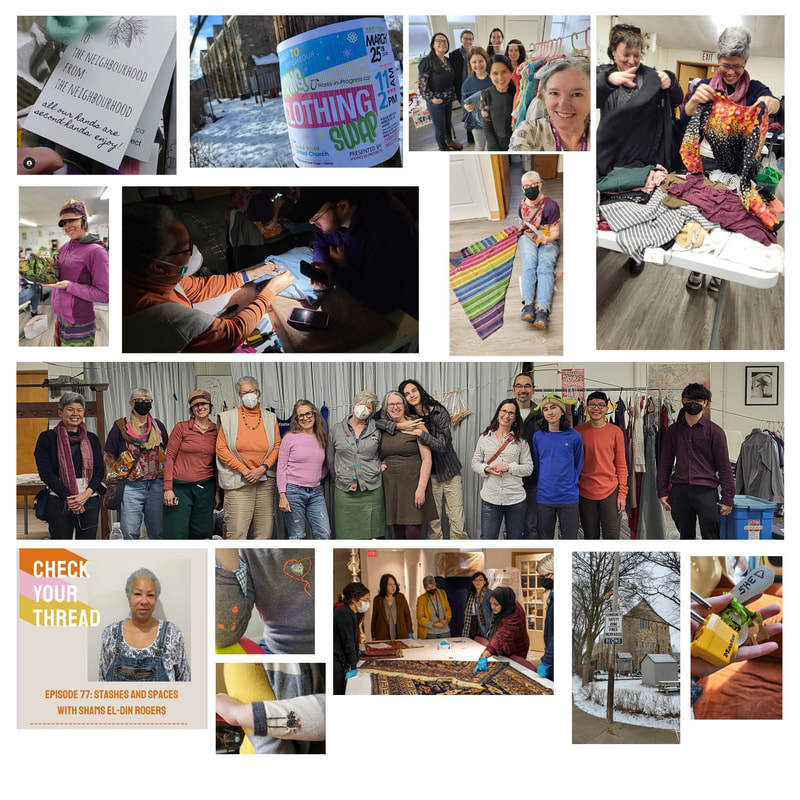
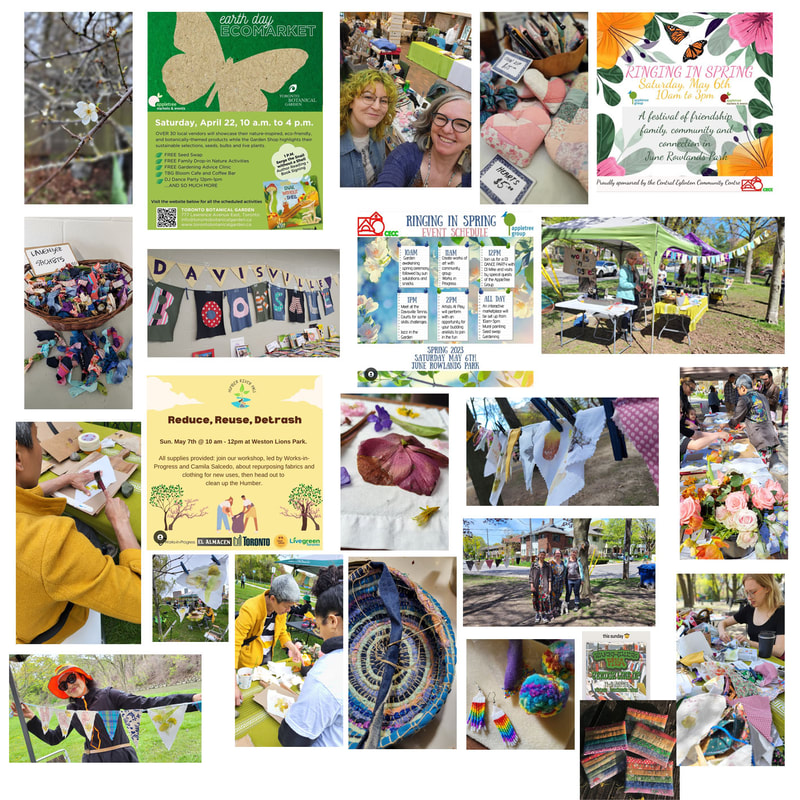
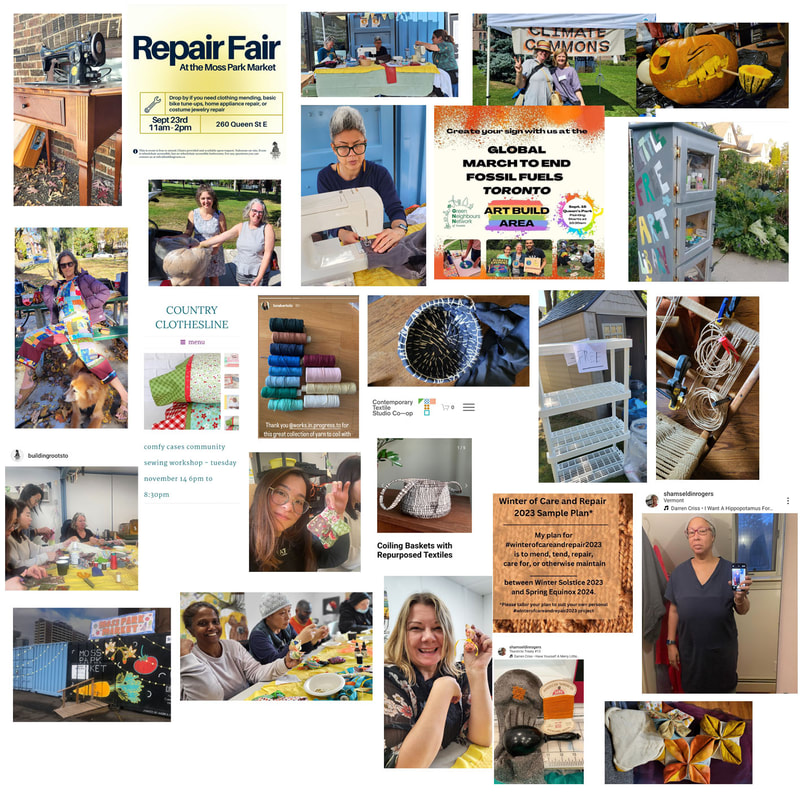
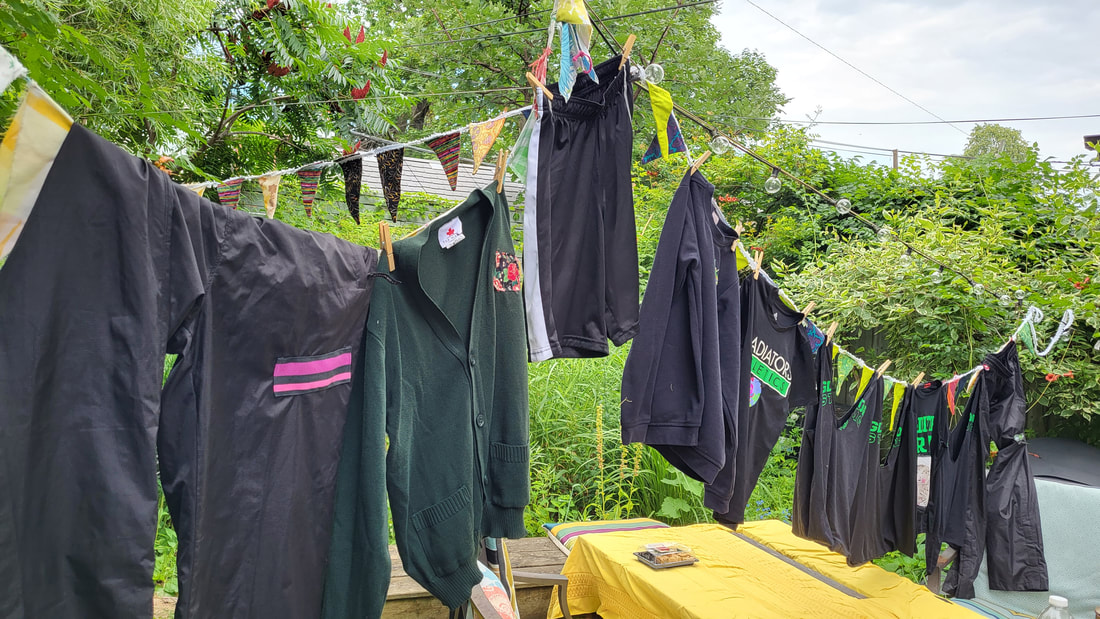
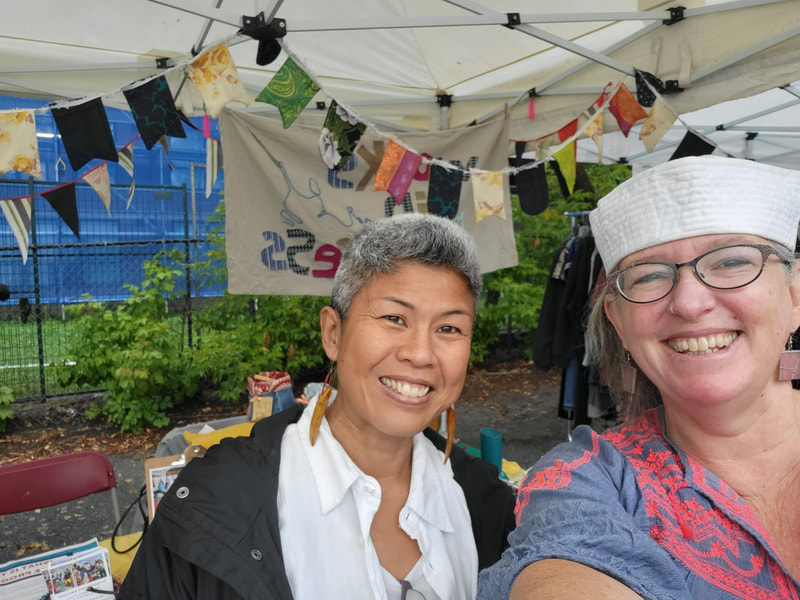
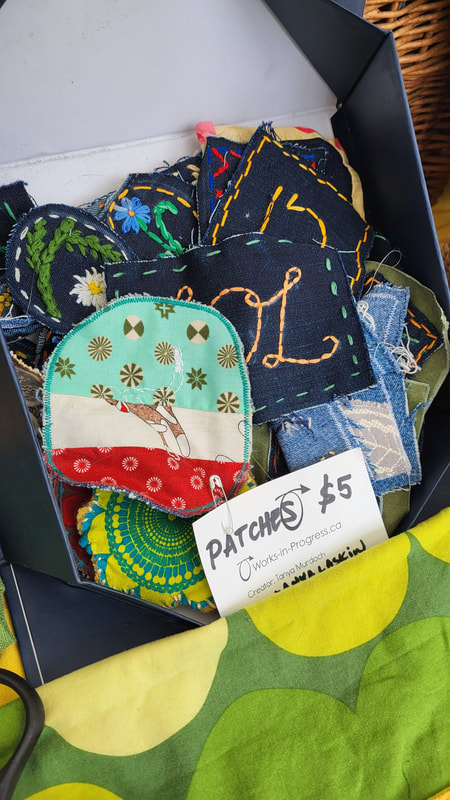
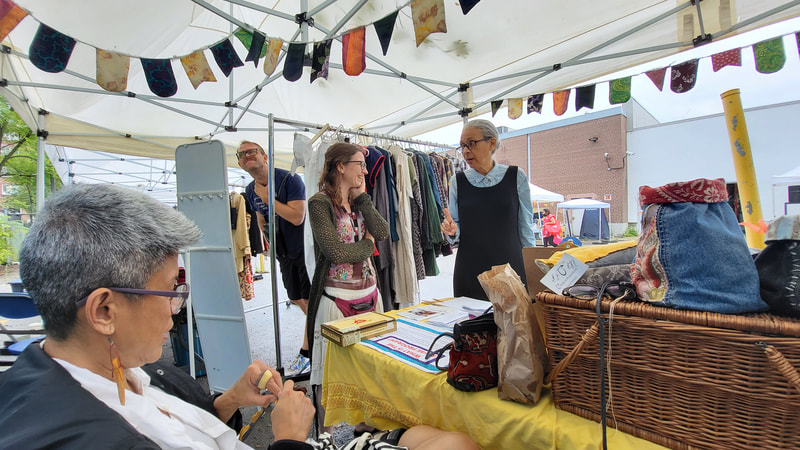

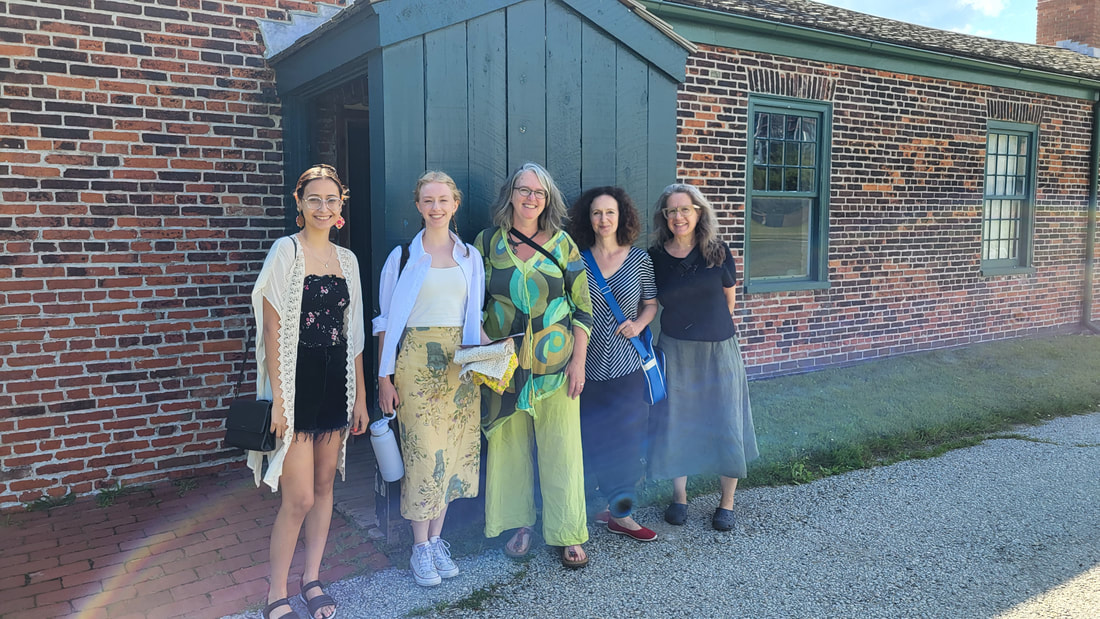
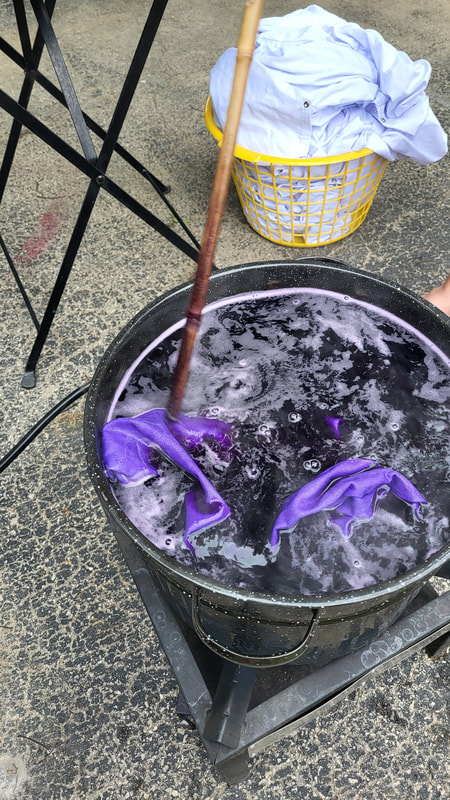
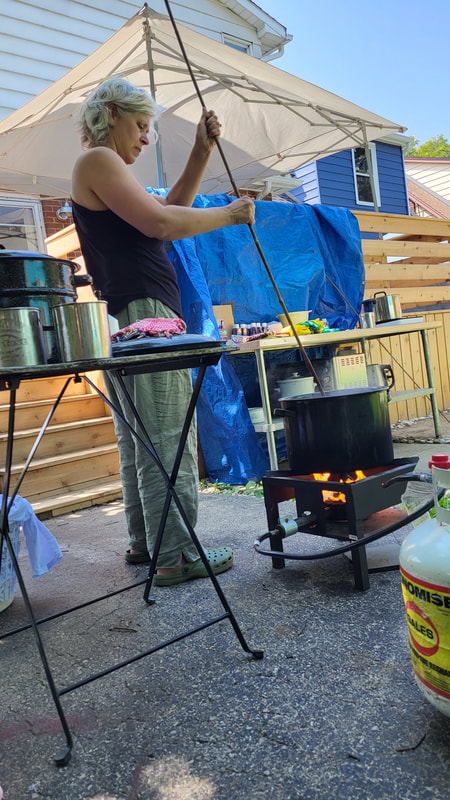
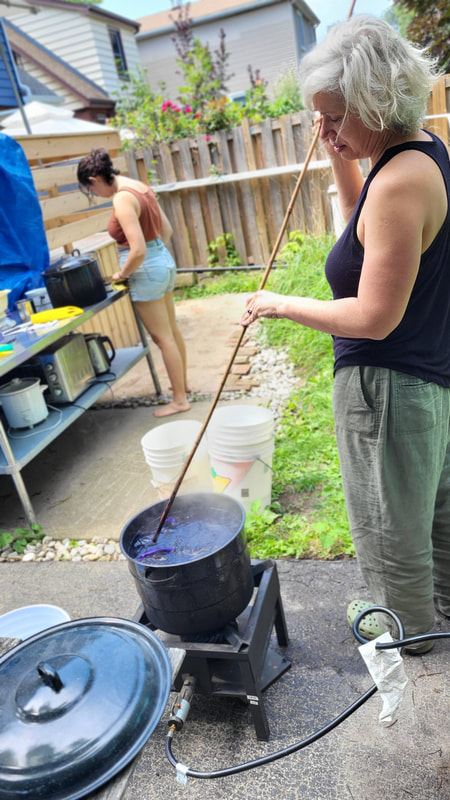
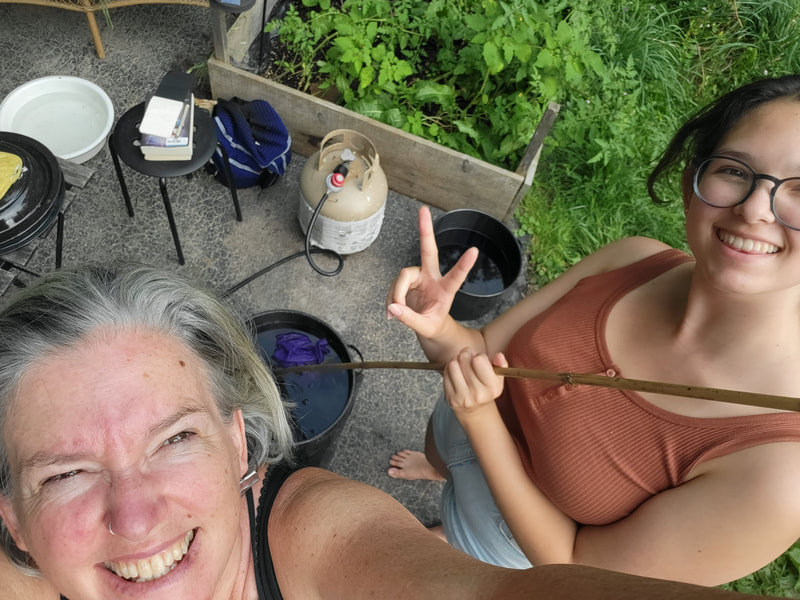
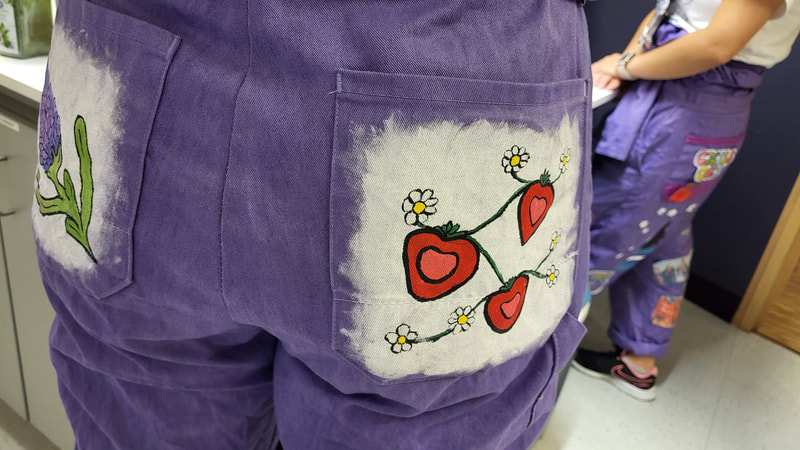
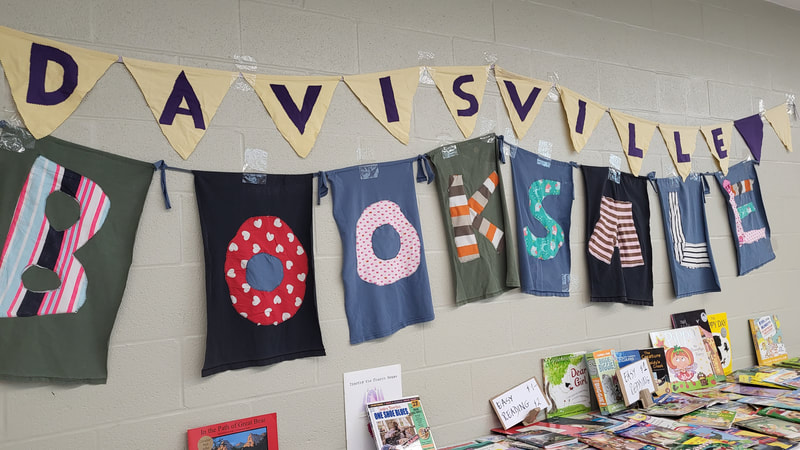
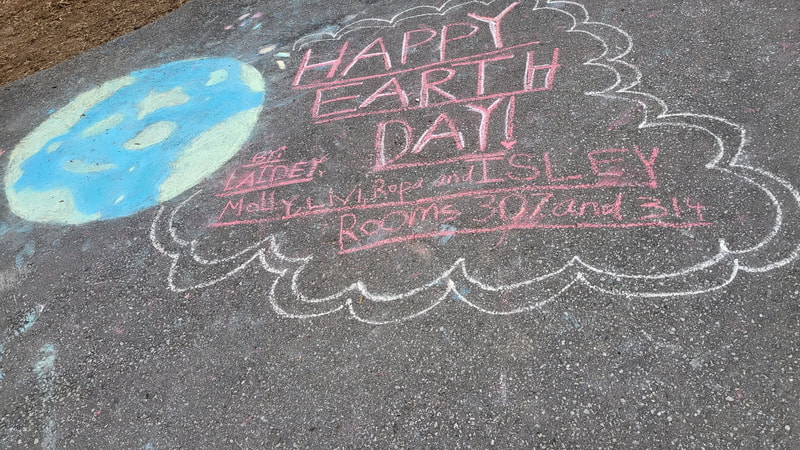
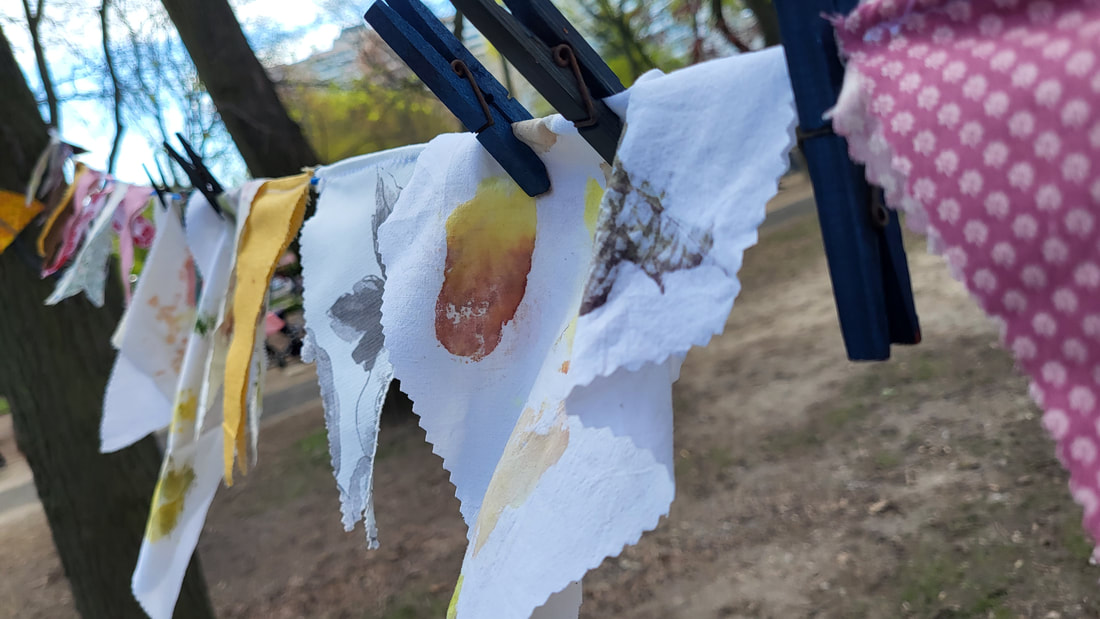
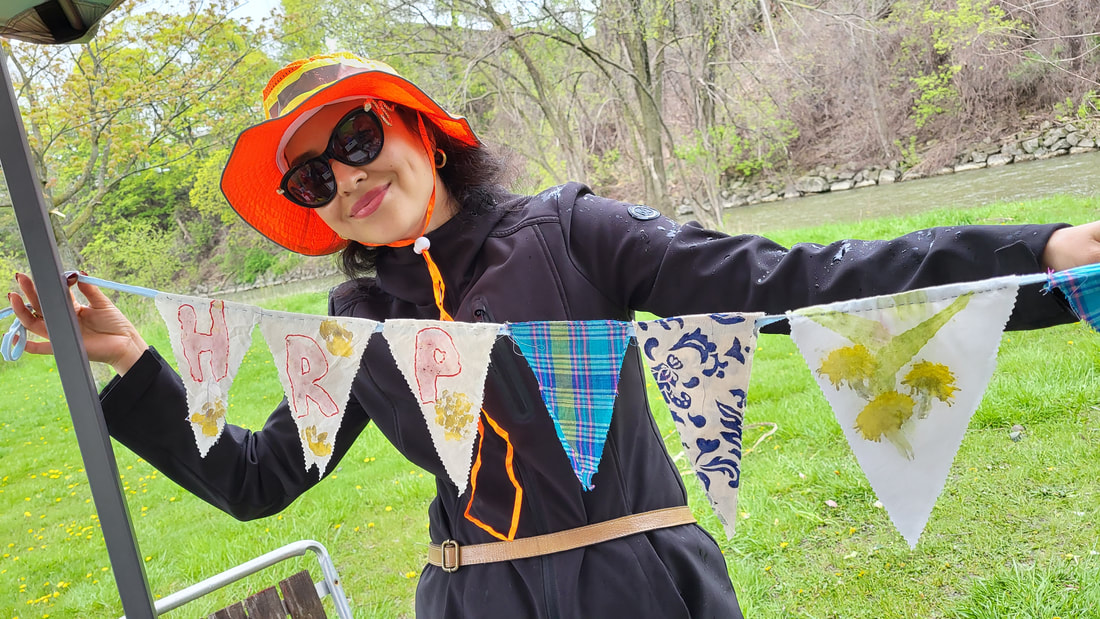
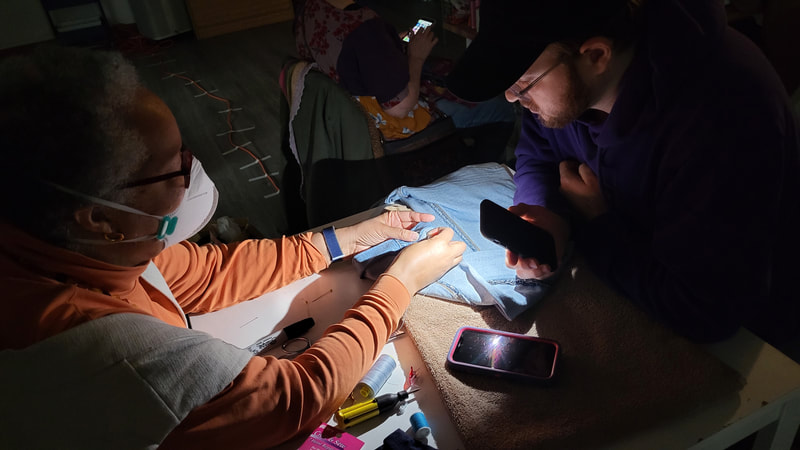
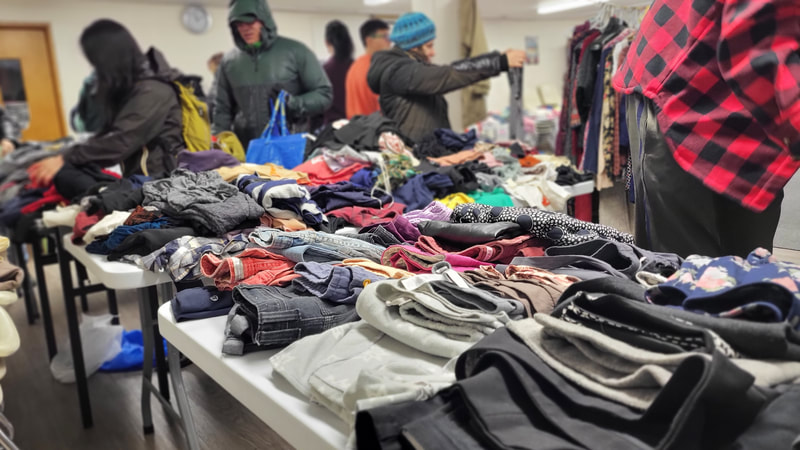
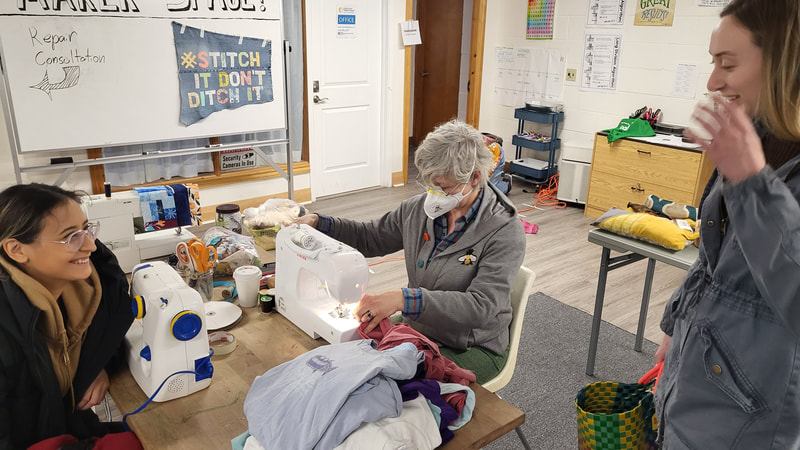
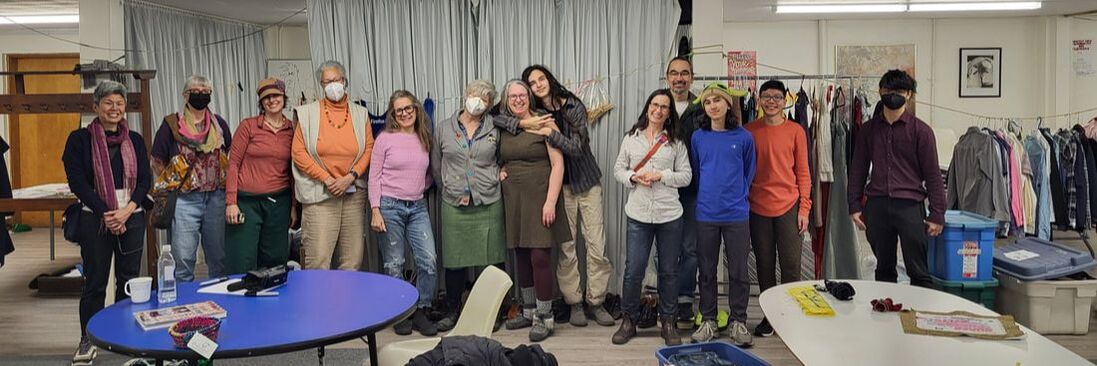
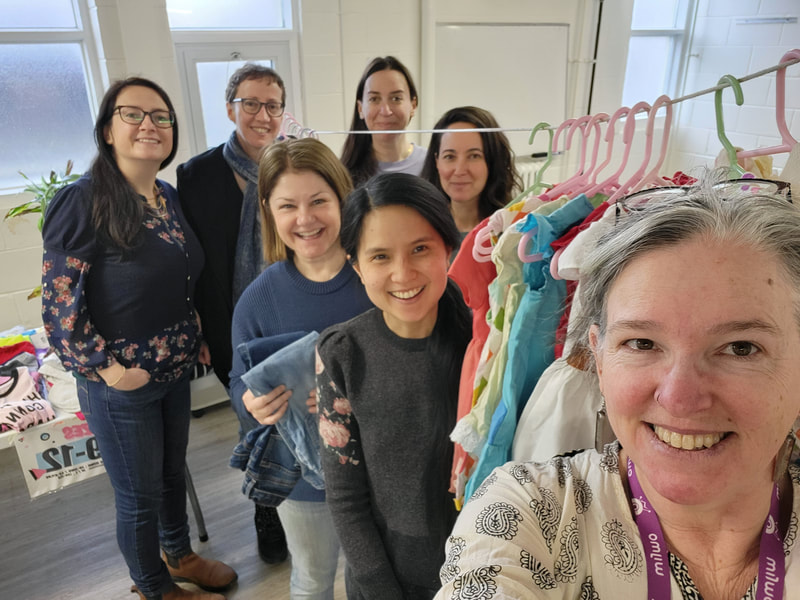
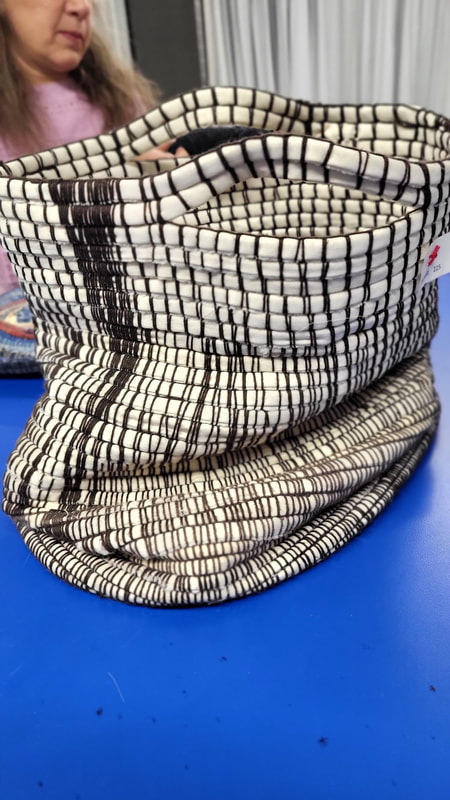
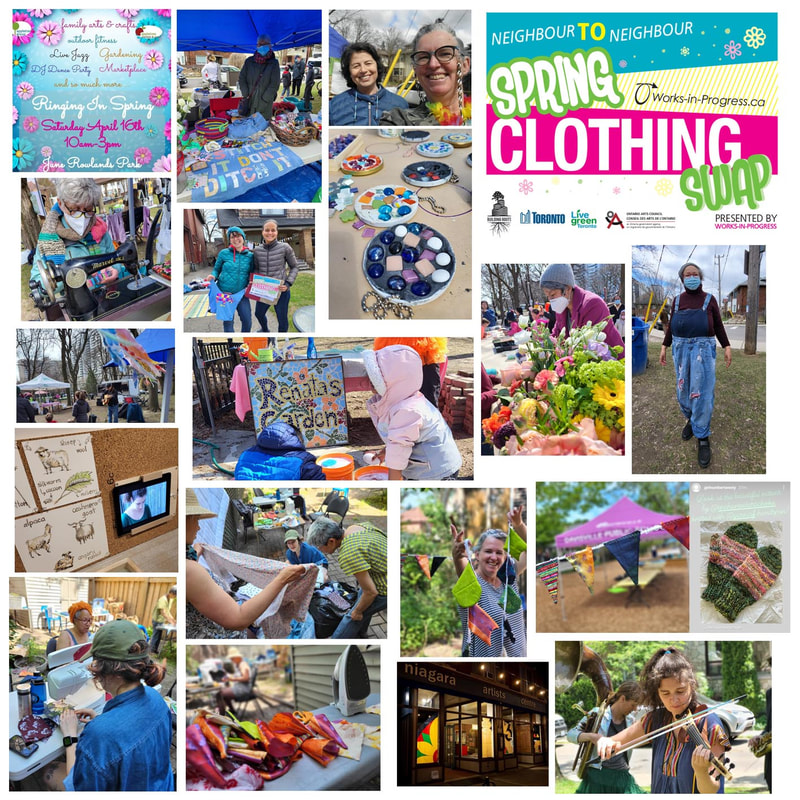
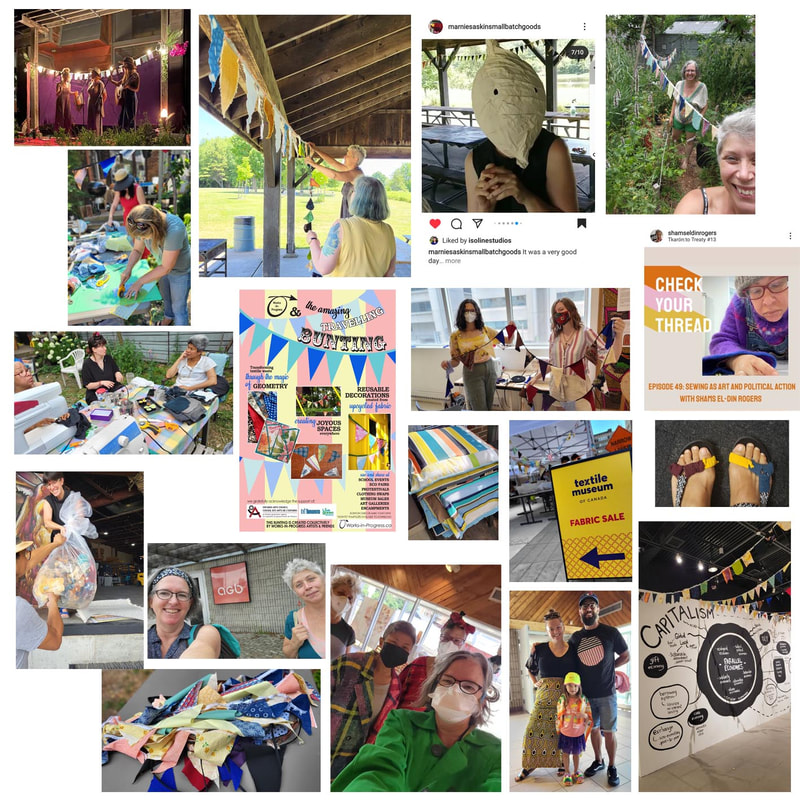
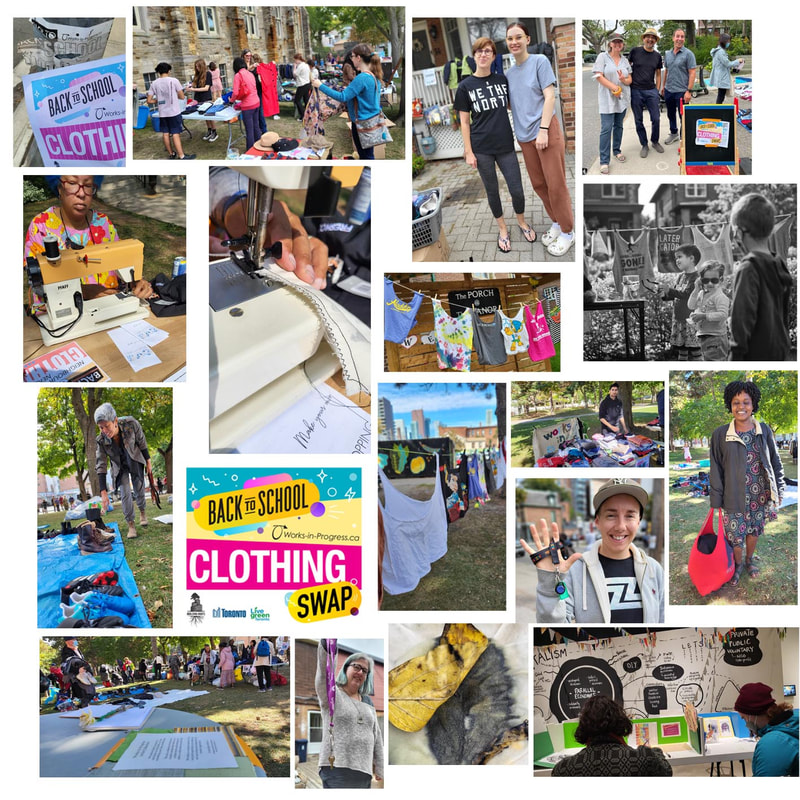
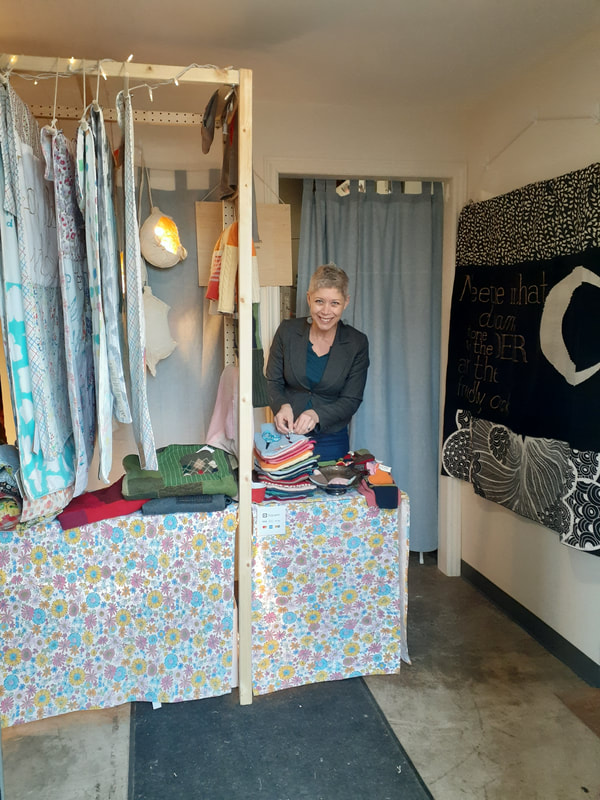
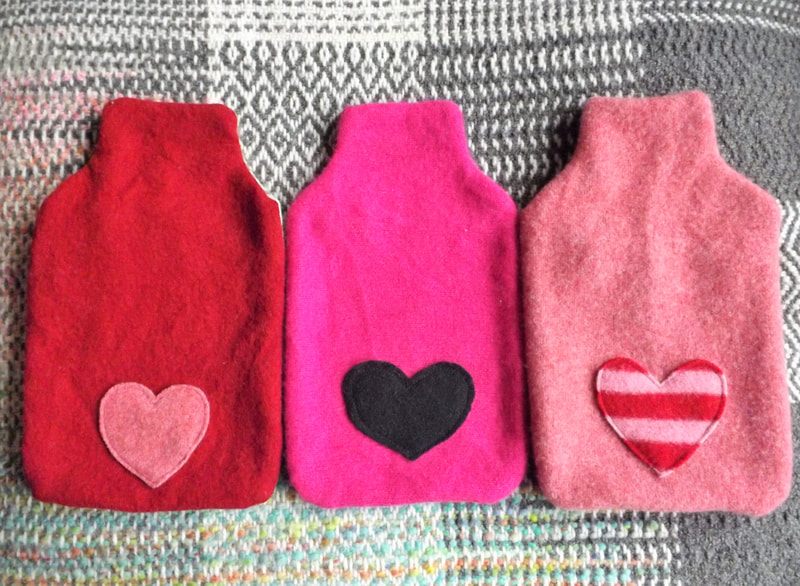
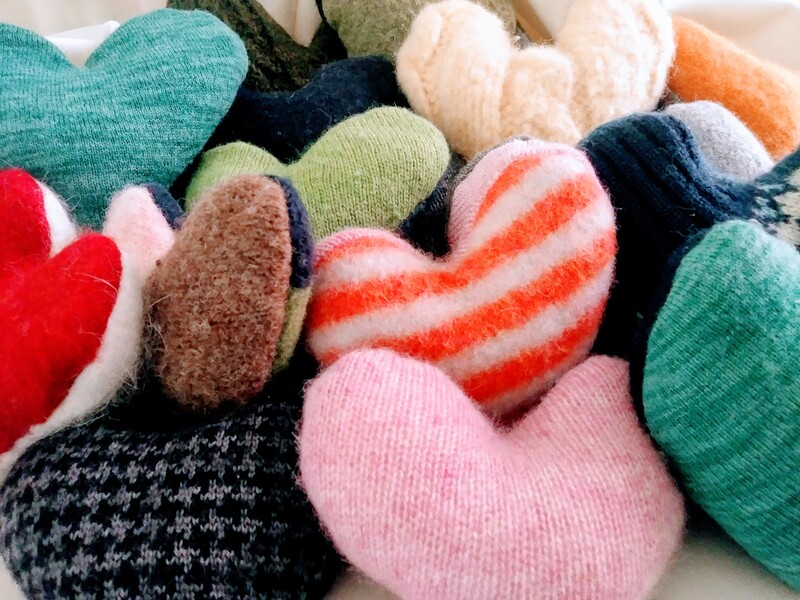
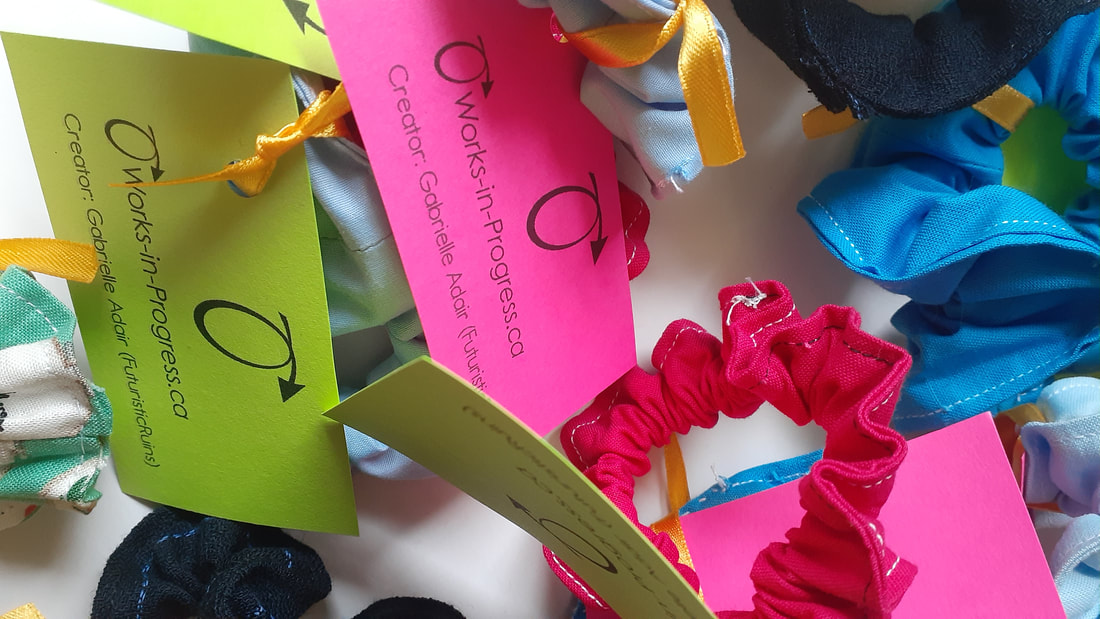
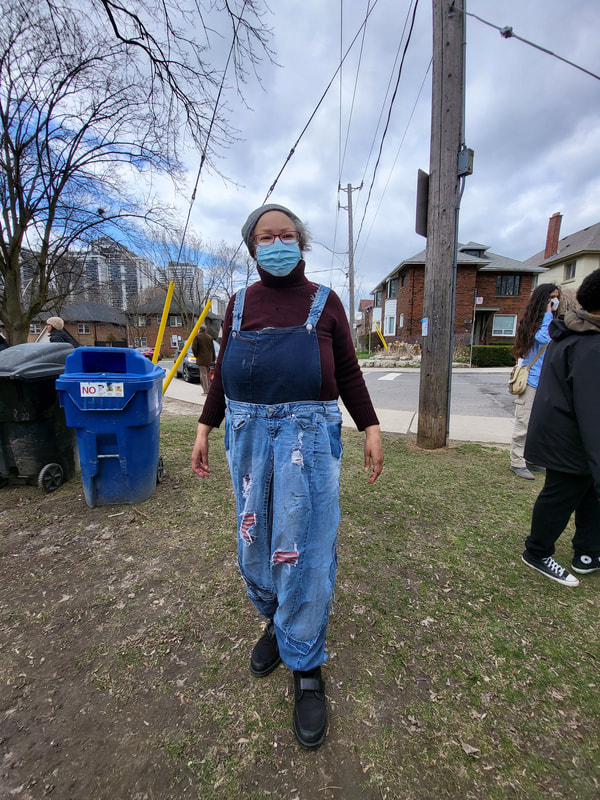
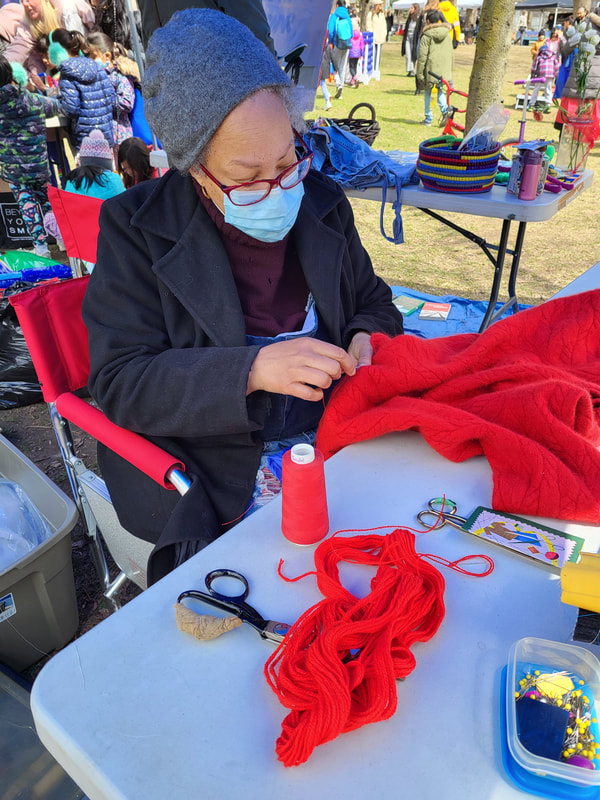
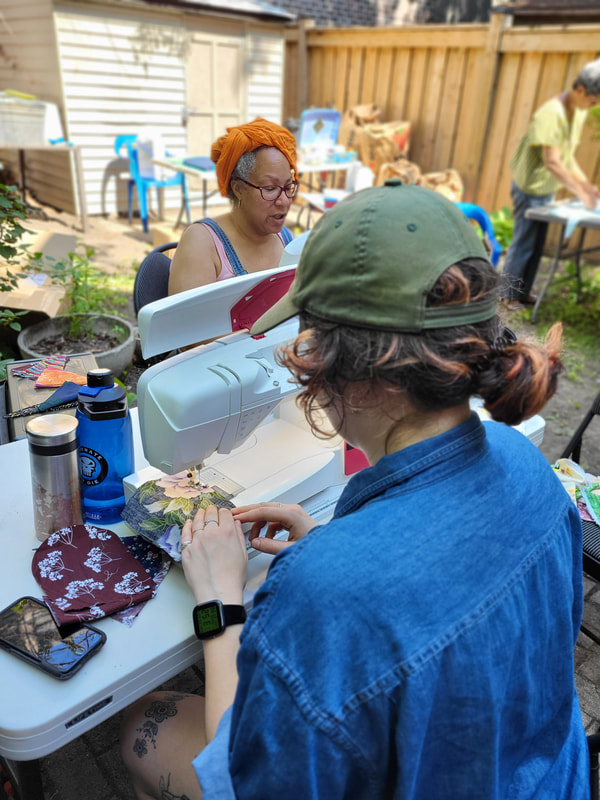
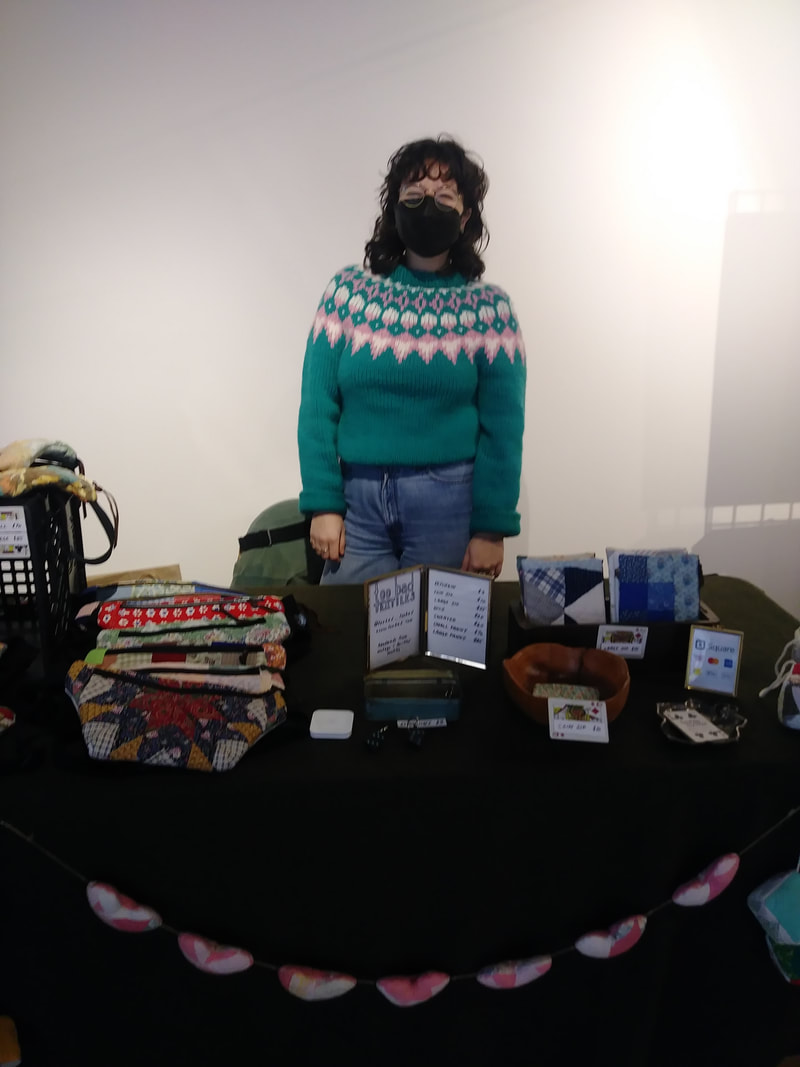
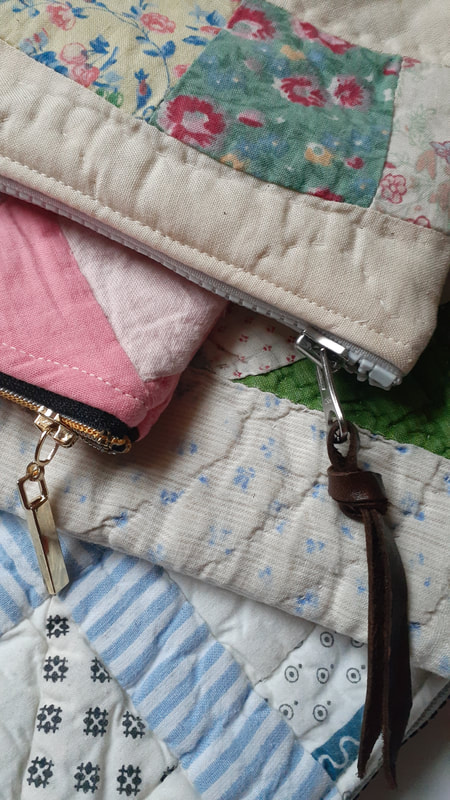
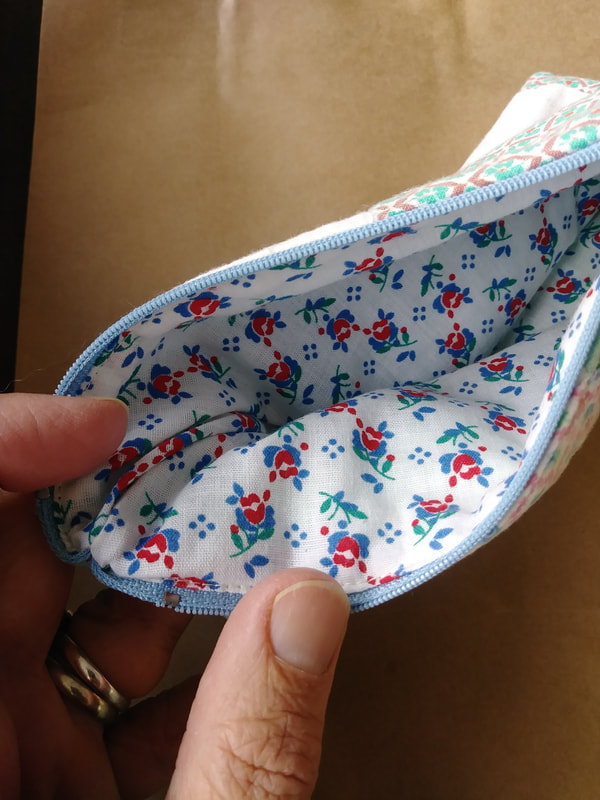
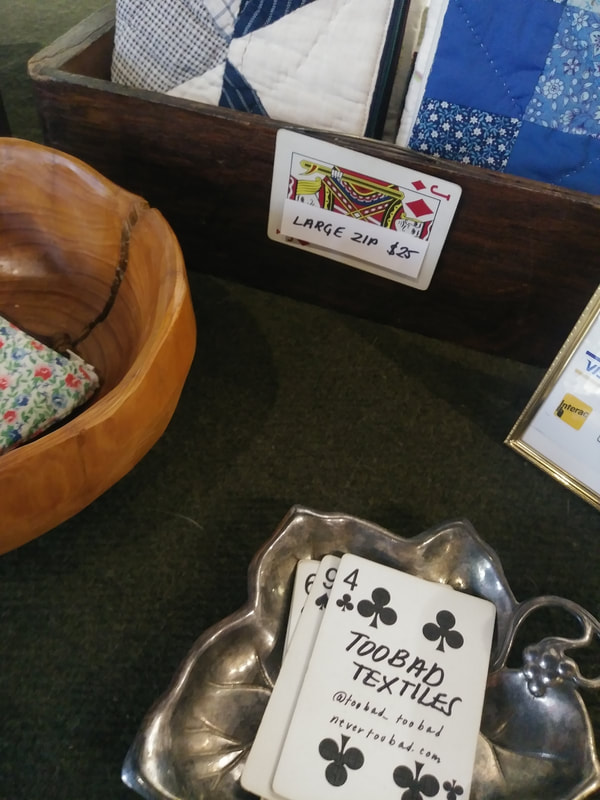
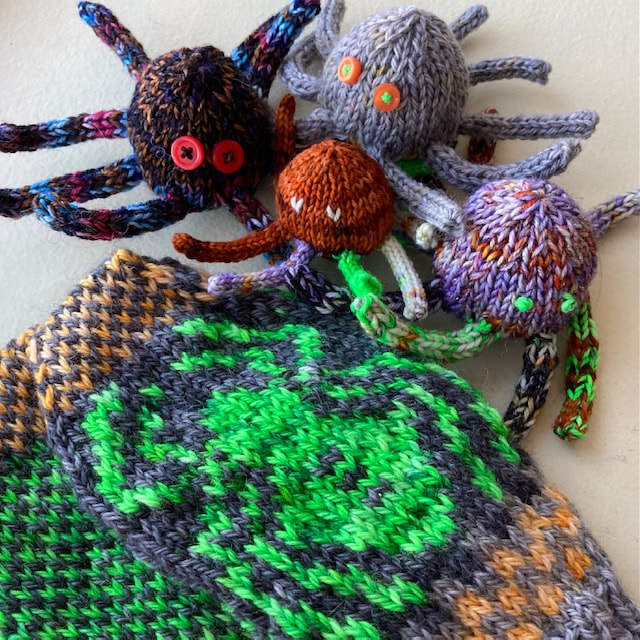
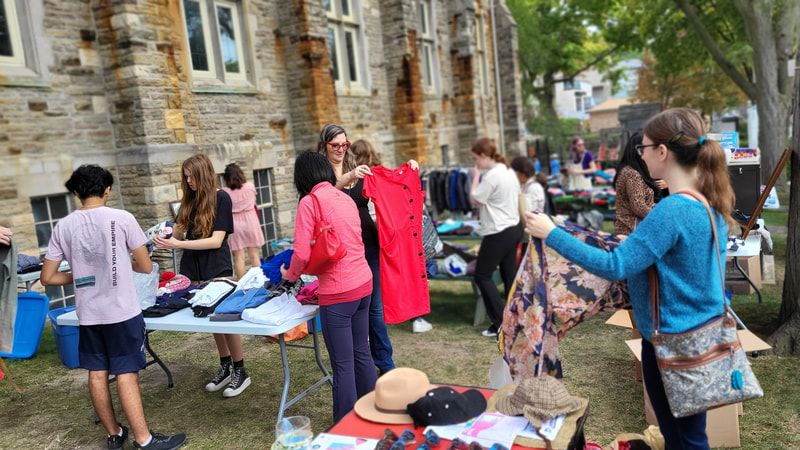
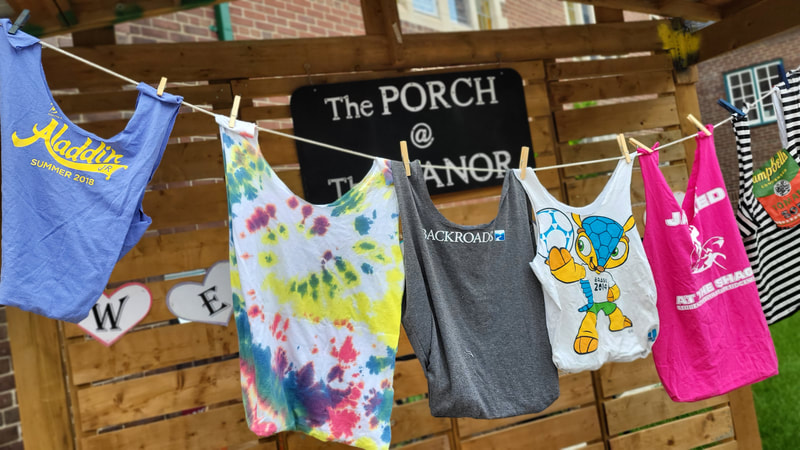
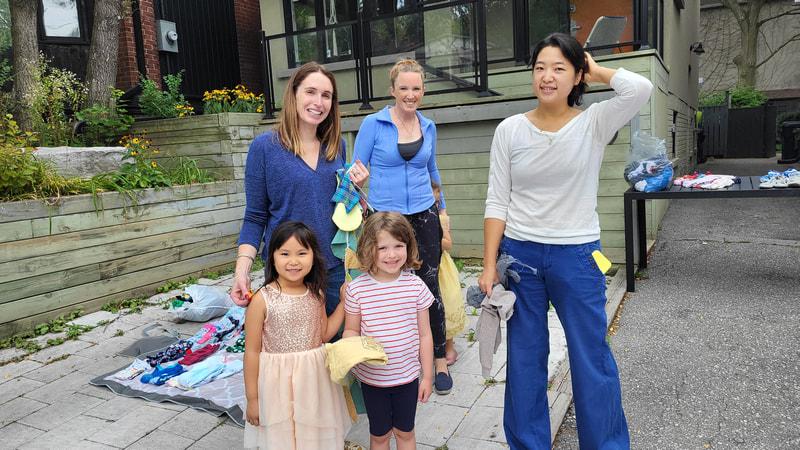
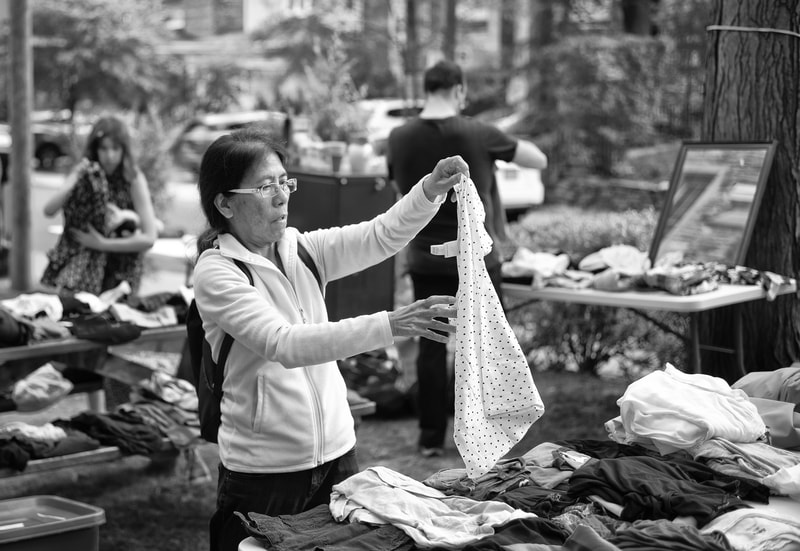
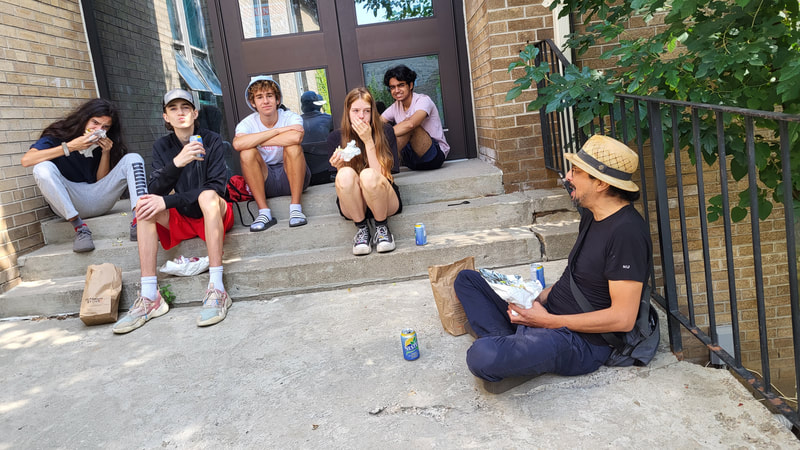
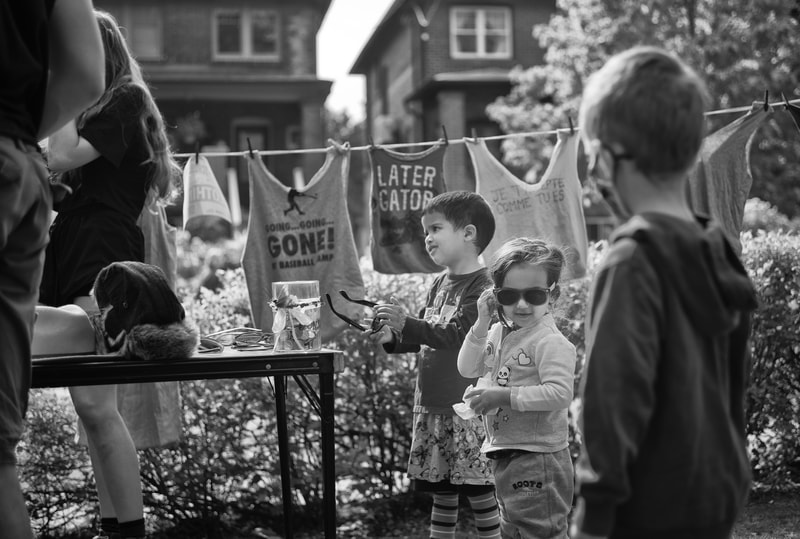
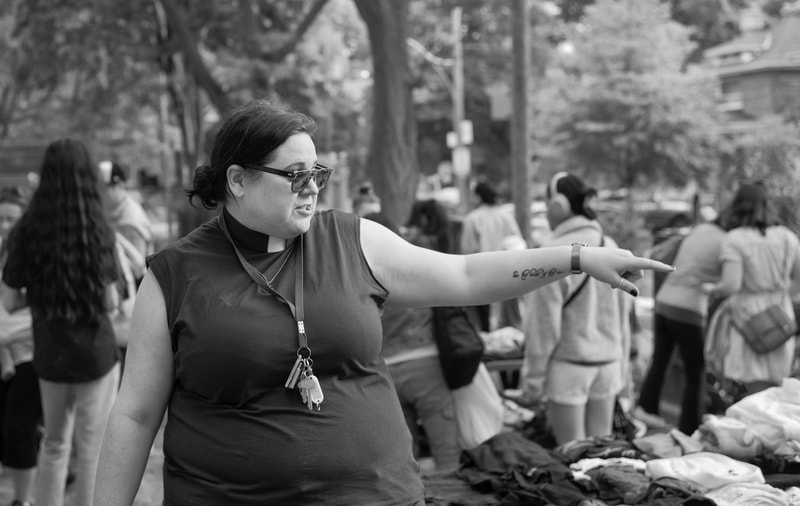
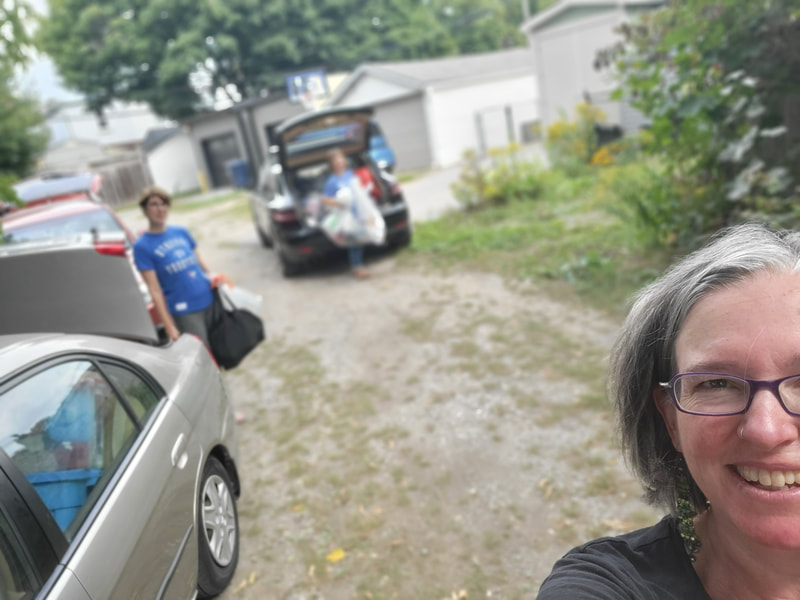
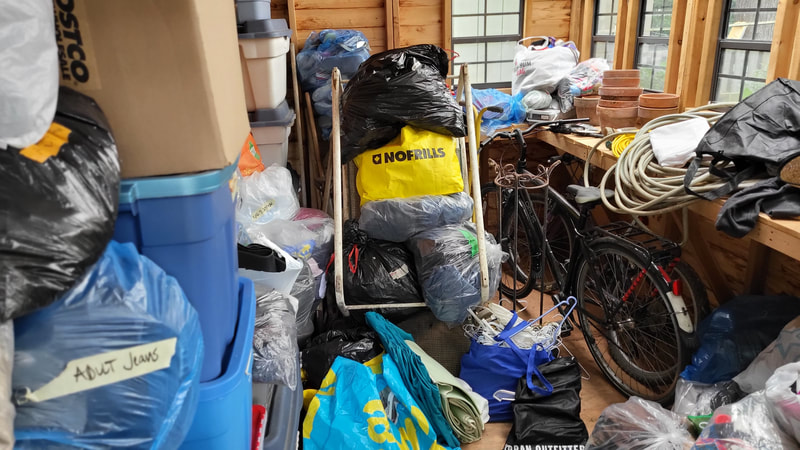
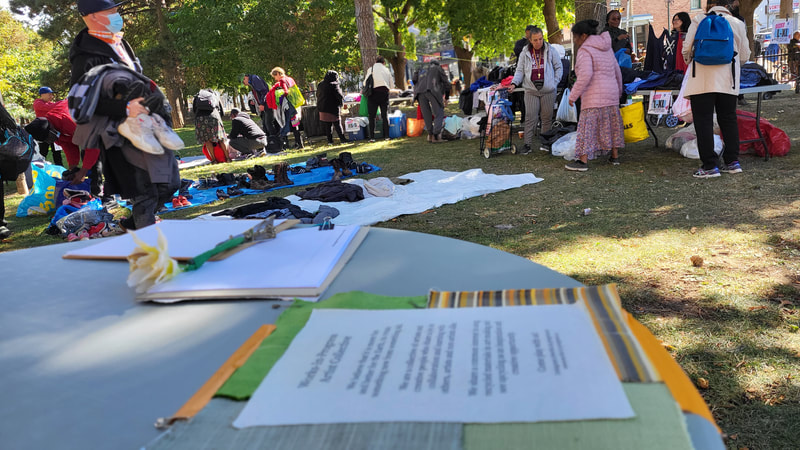
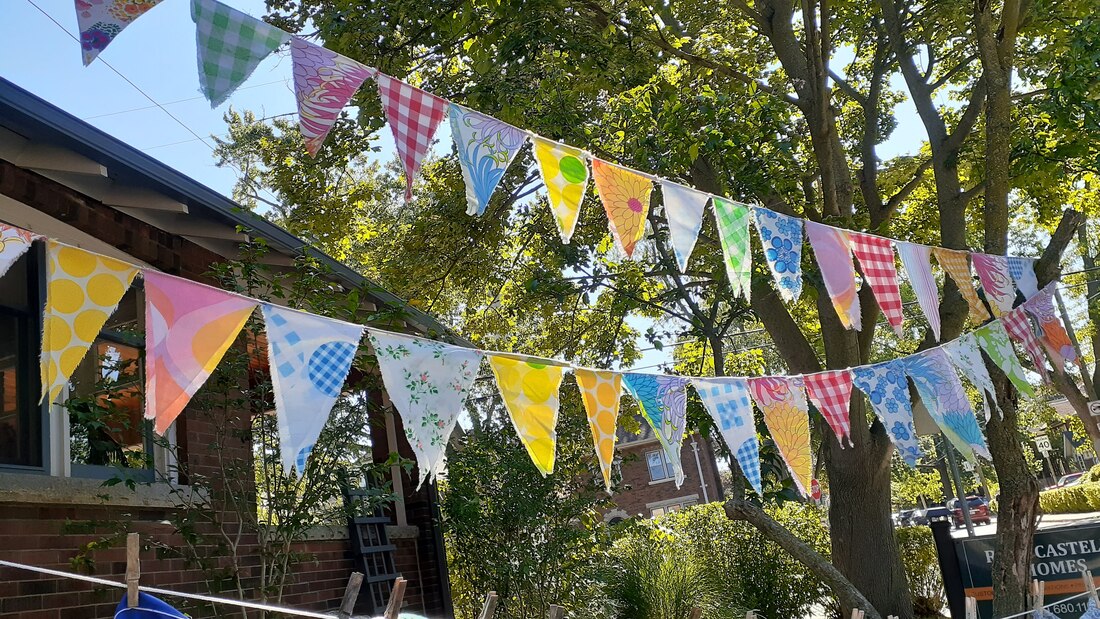
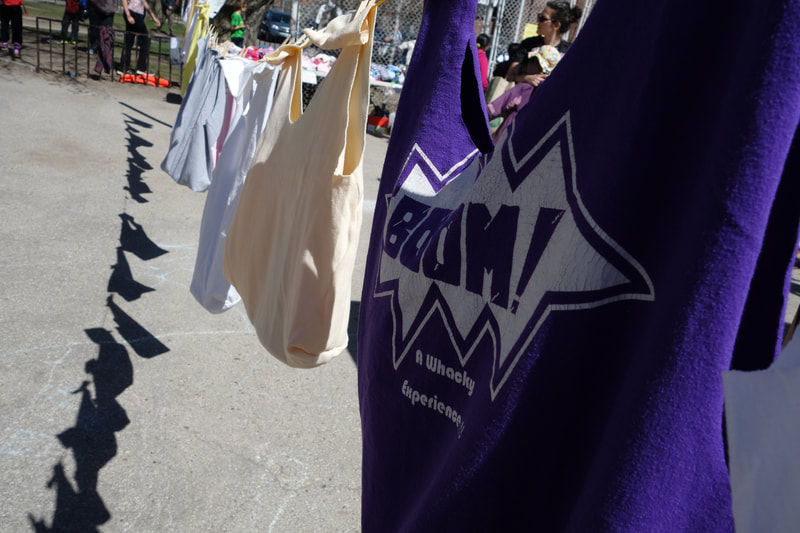
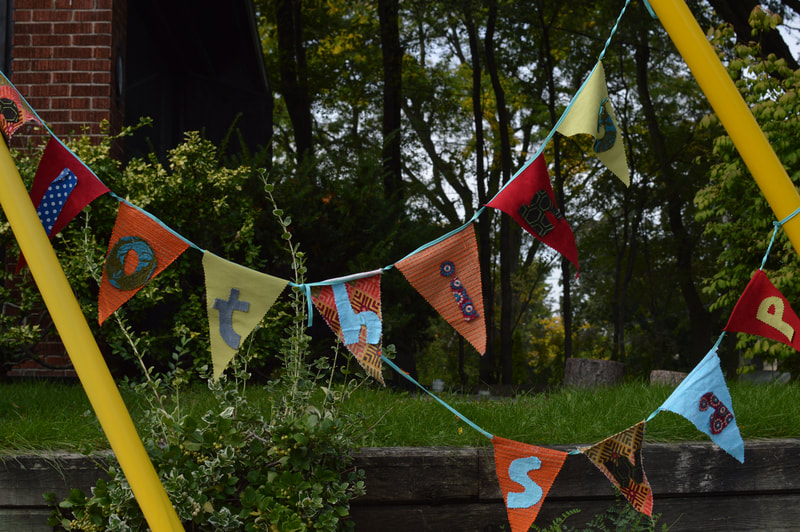
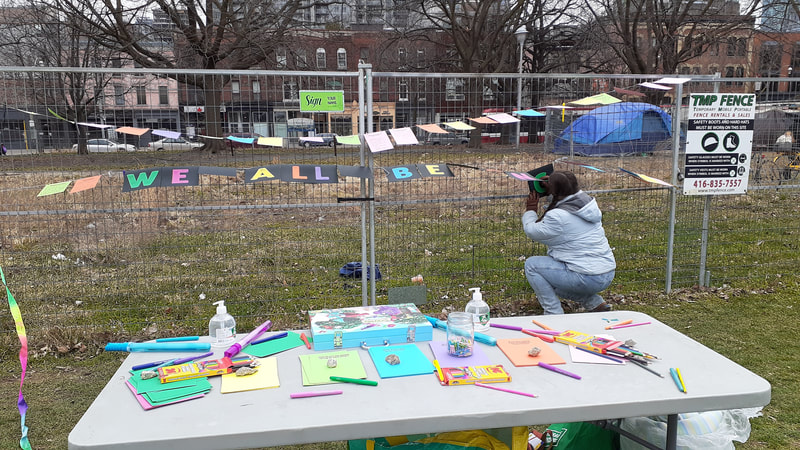

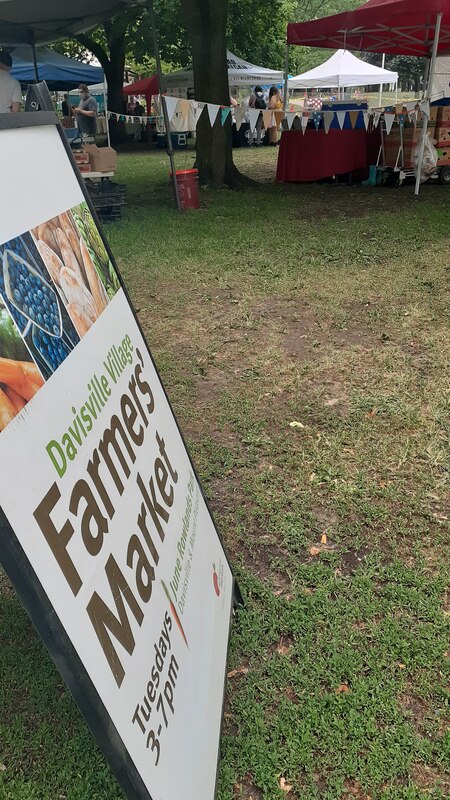
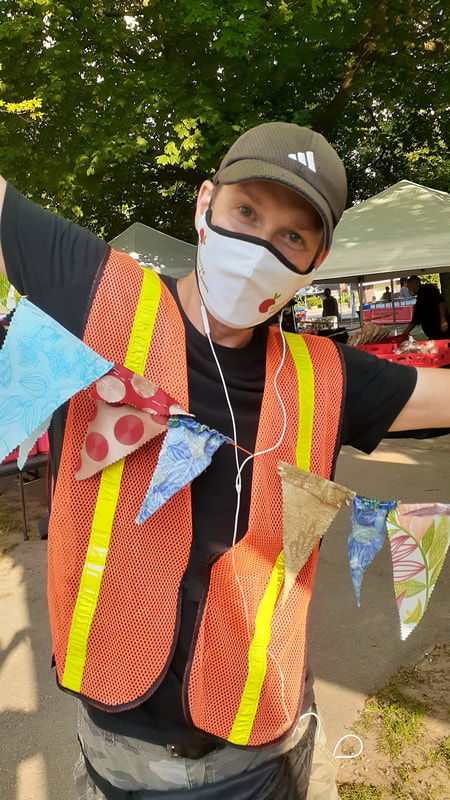
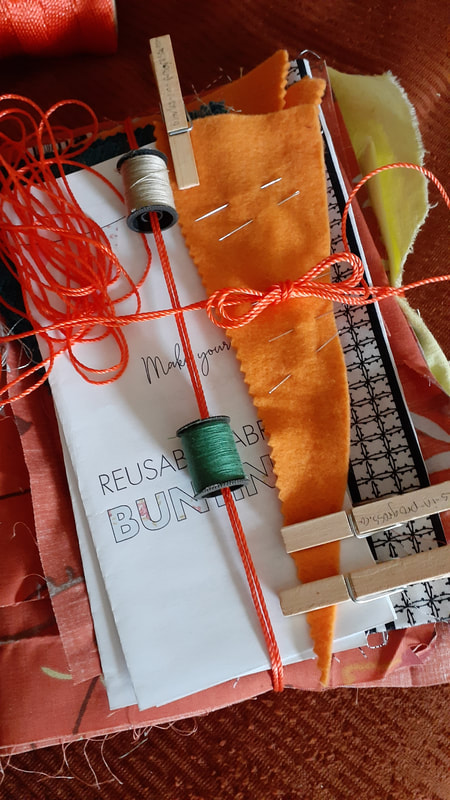
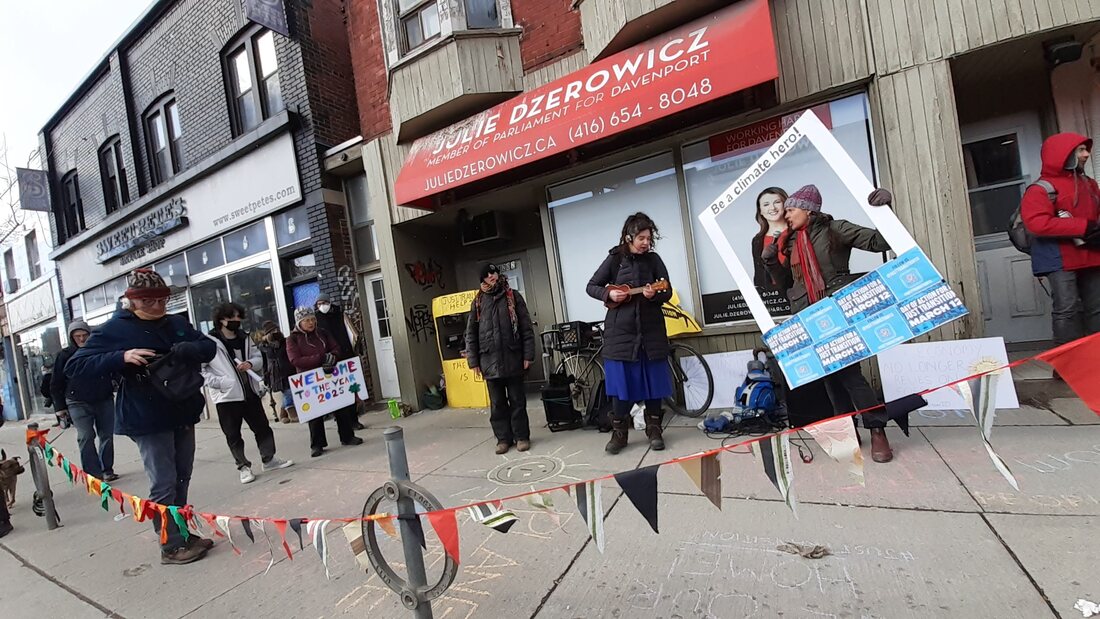
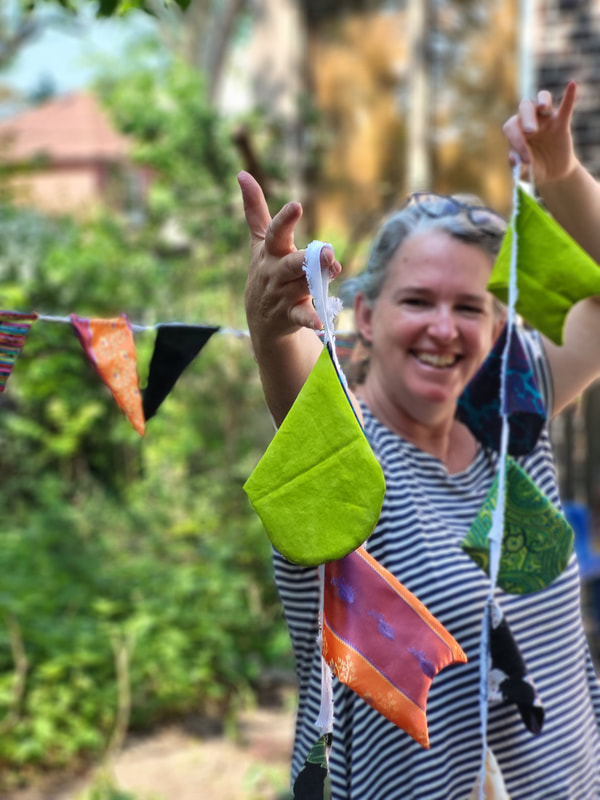
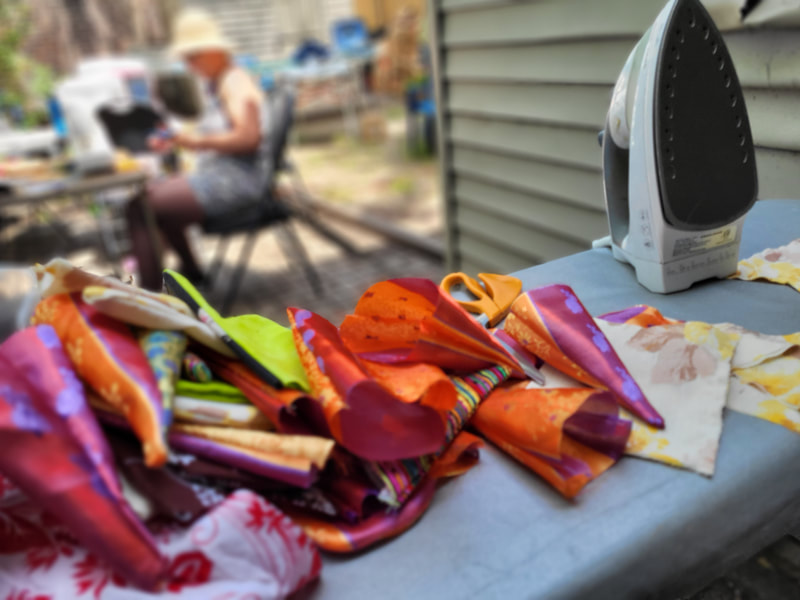
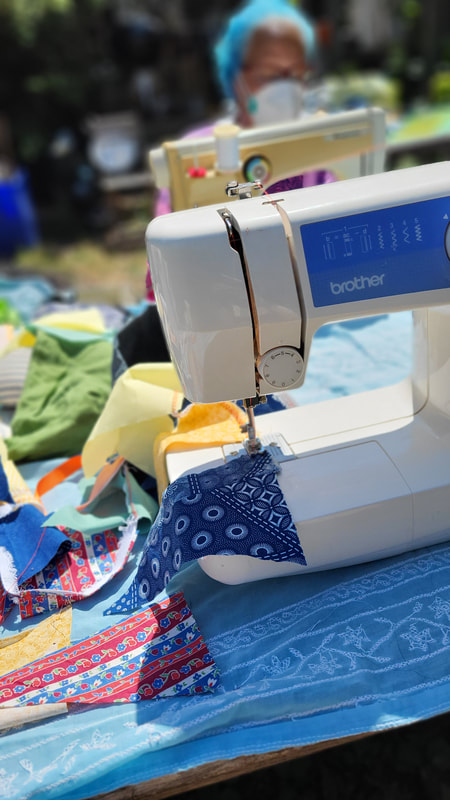
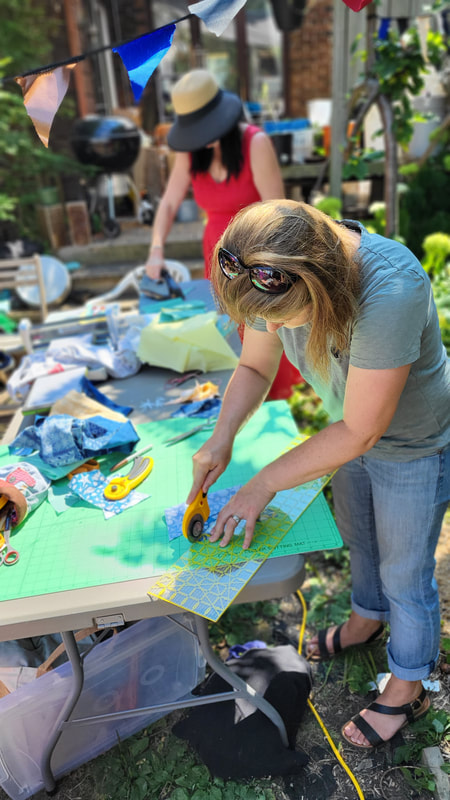
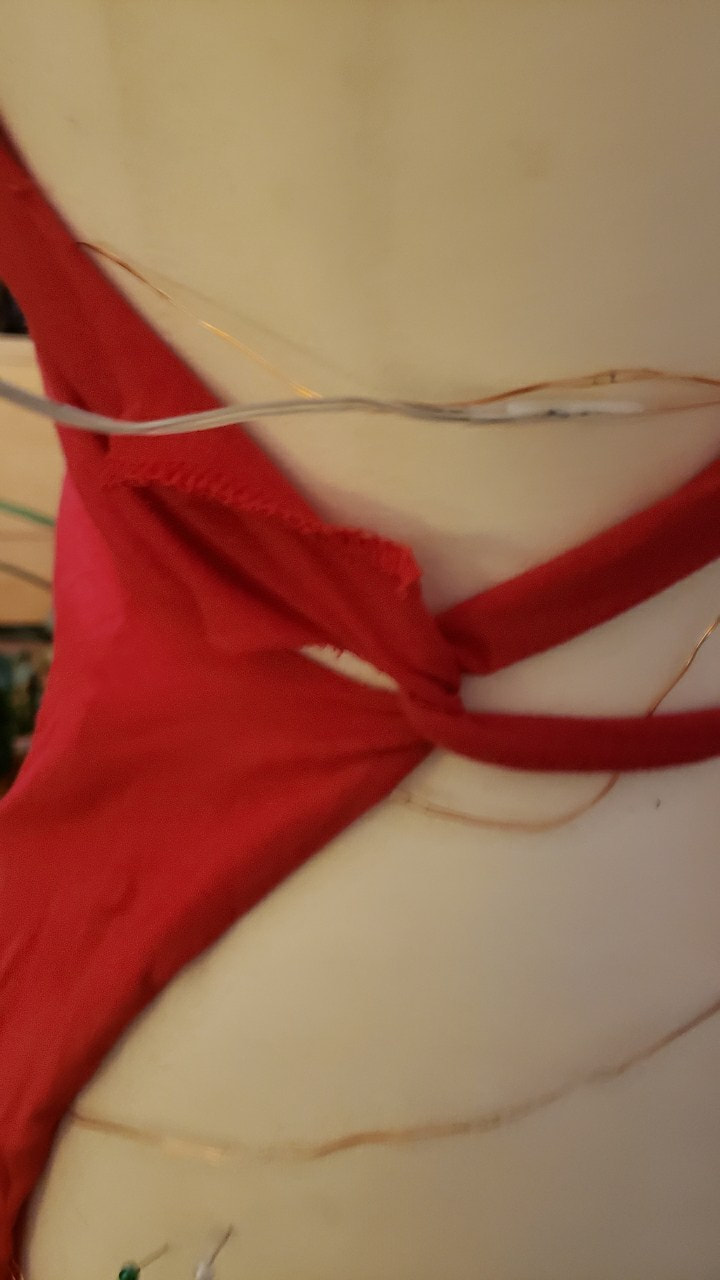
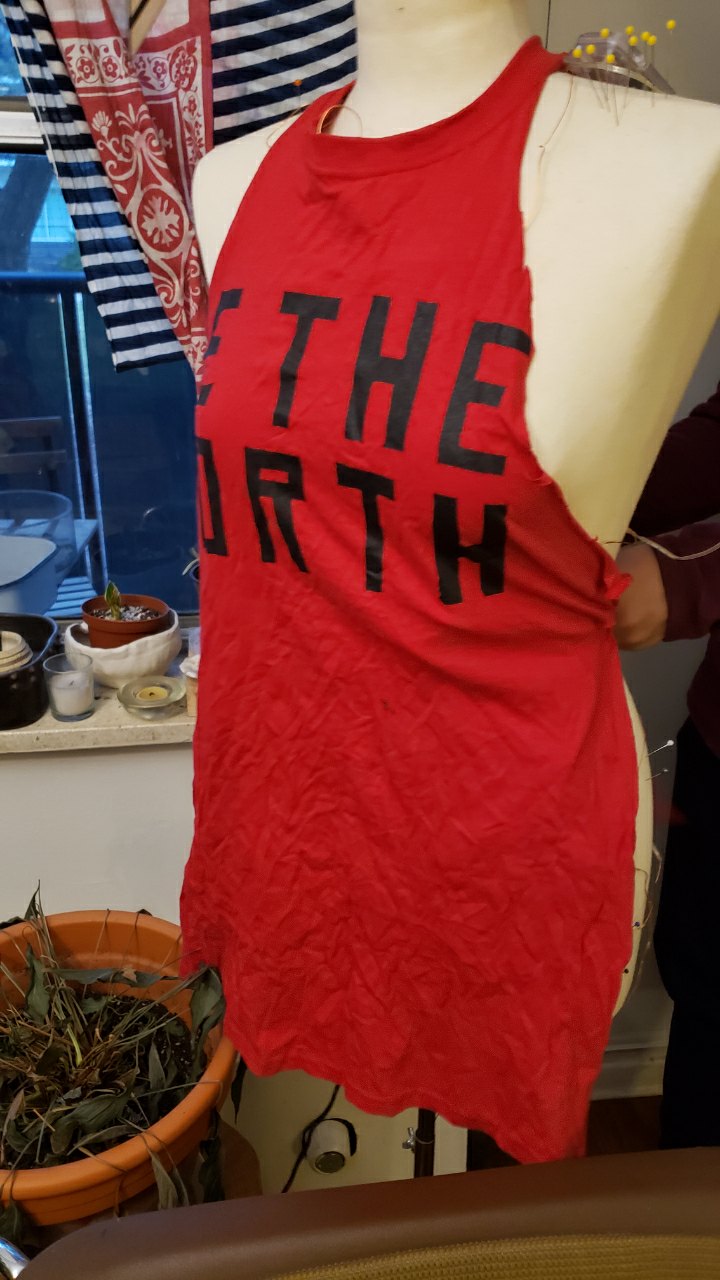

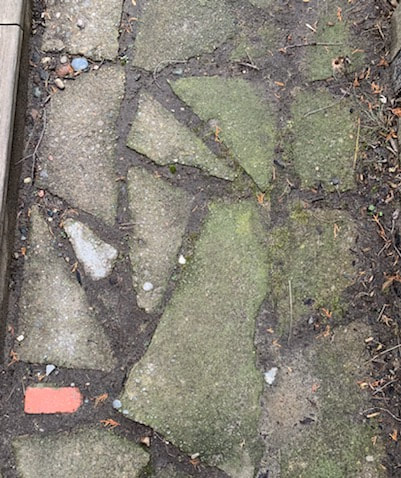
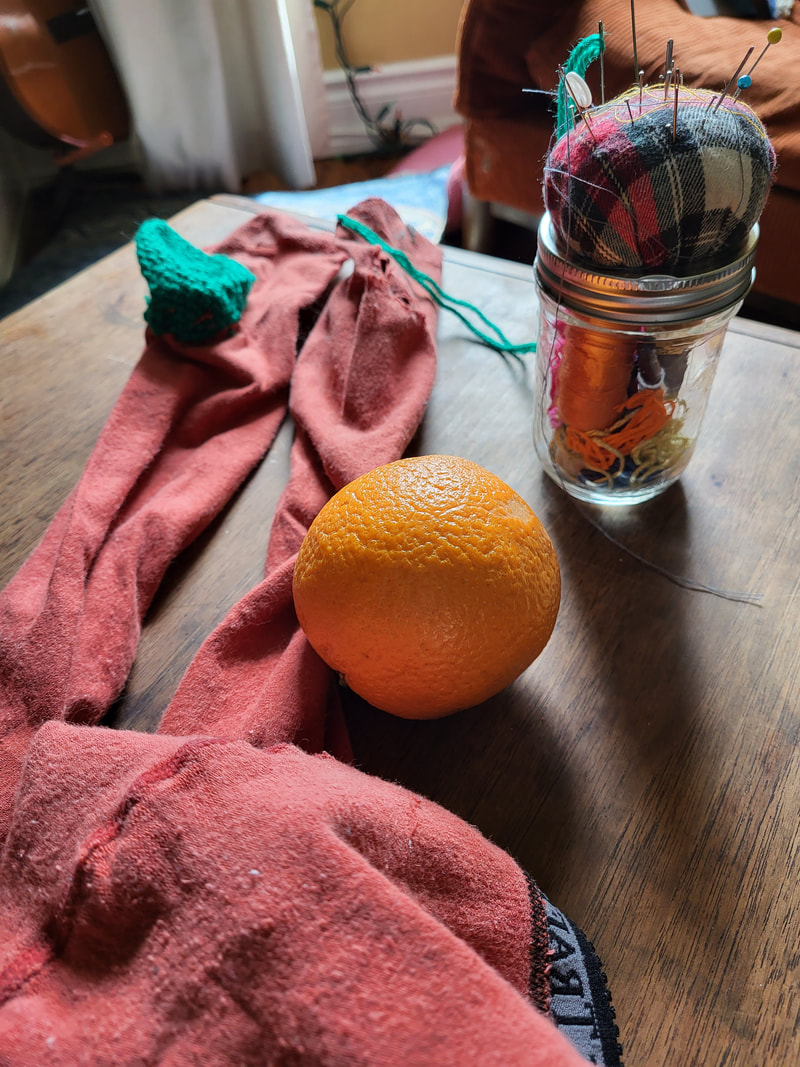
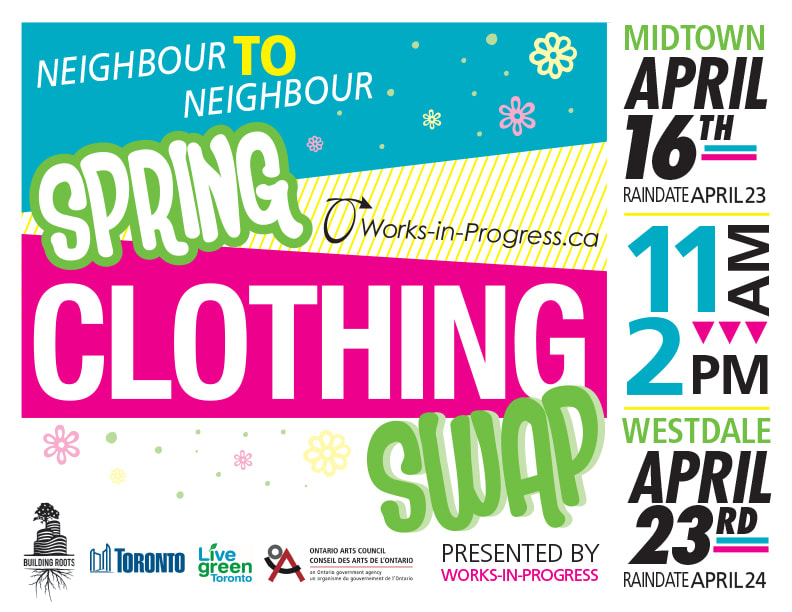
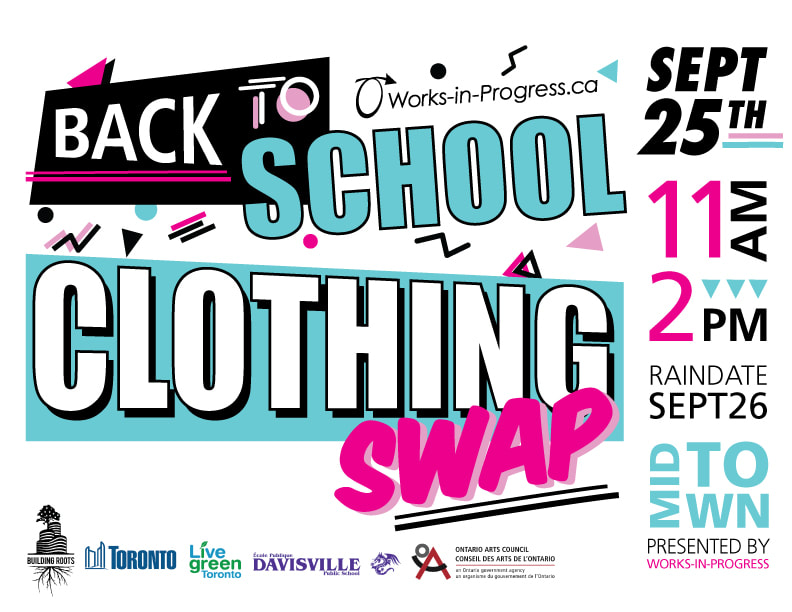
 RSS Feed
RSS Feed
